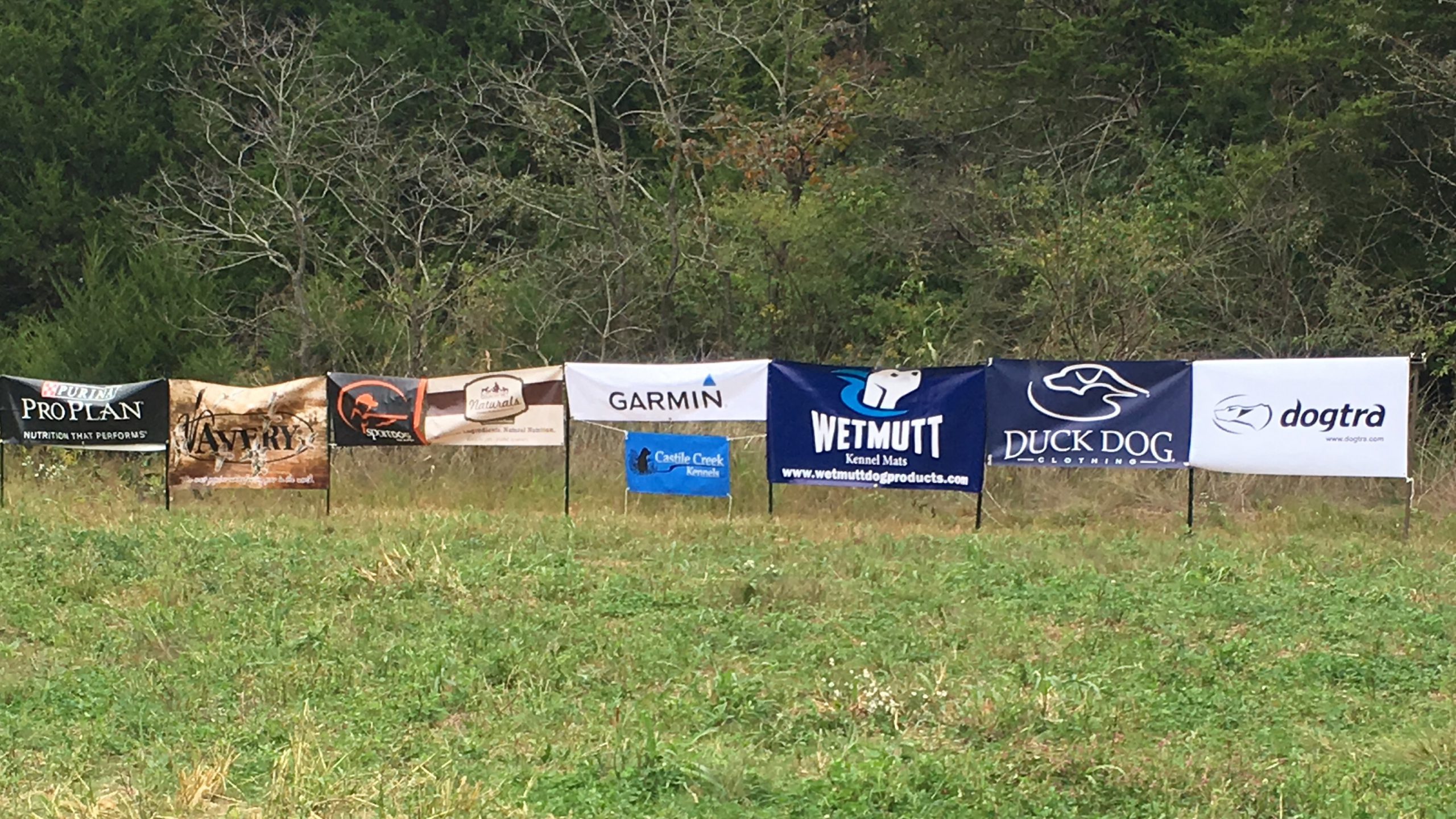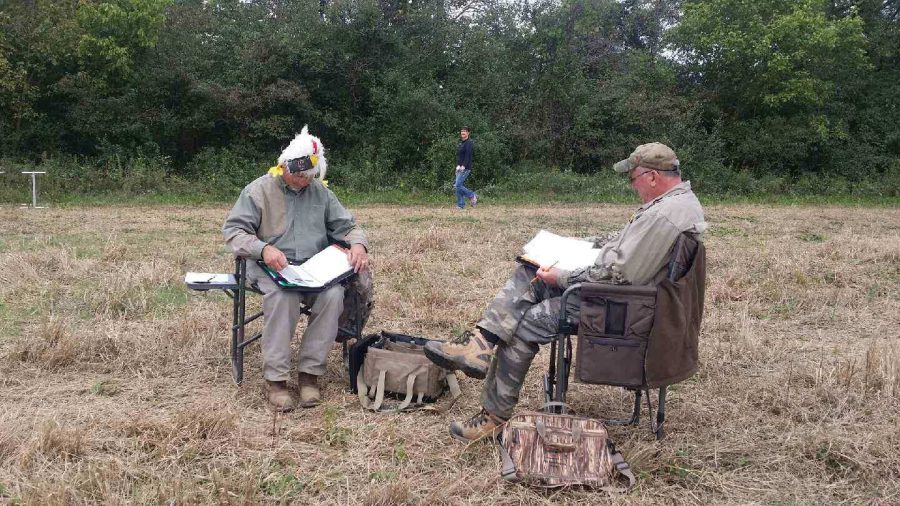
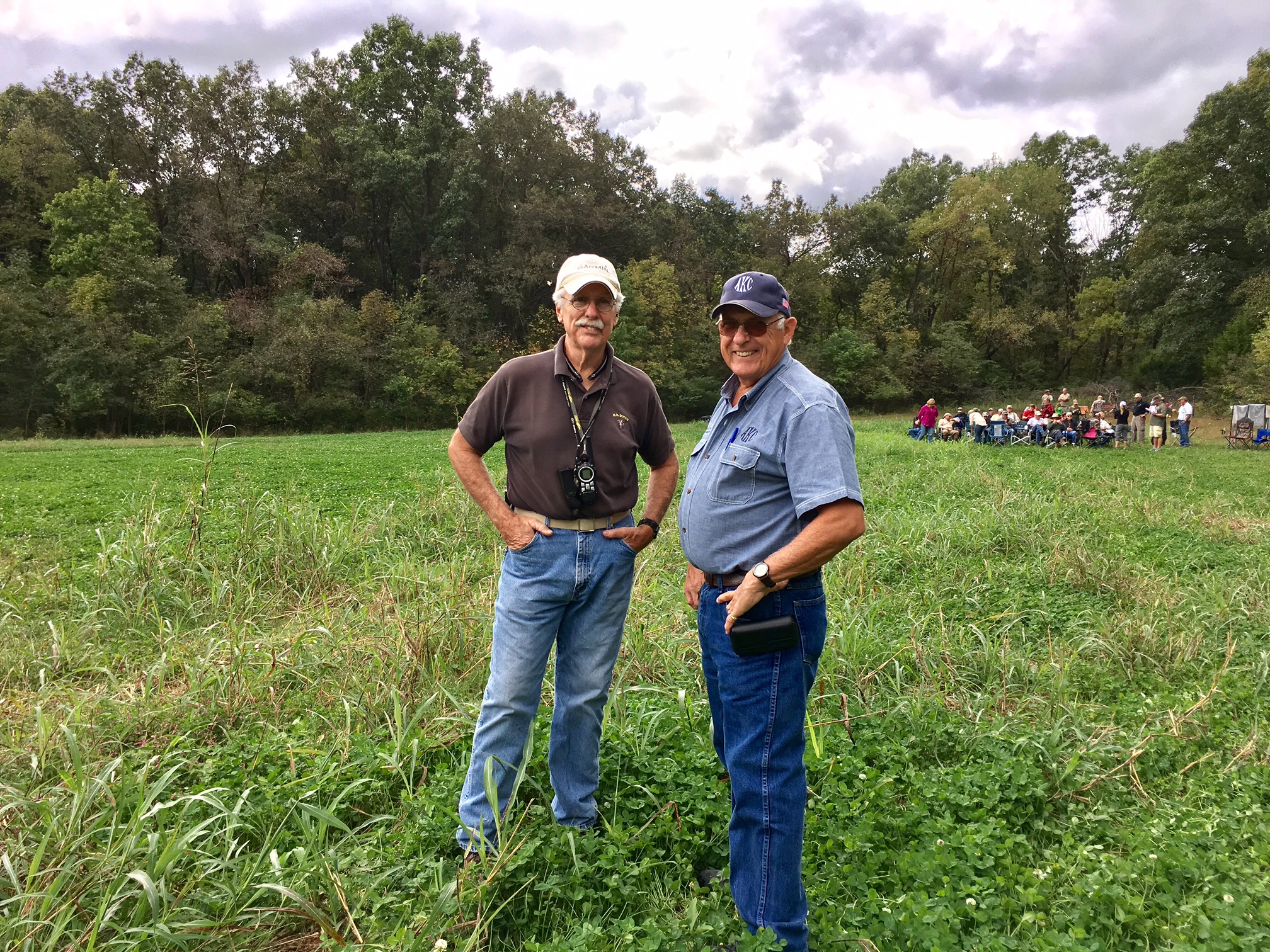 Thank you to our MNRC Reporters. We appreciate your help. If you have a photo to share from your flight Email to masternational@gmail.com
Thank you to our MNRC Reporters. We appreciate your help. If you have a photo to share from your flight Email to masternational@gmail.com
Monday, October 3, 2016
Flight A Jack Combs MNRC Reporter
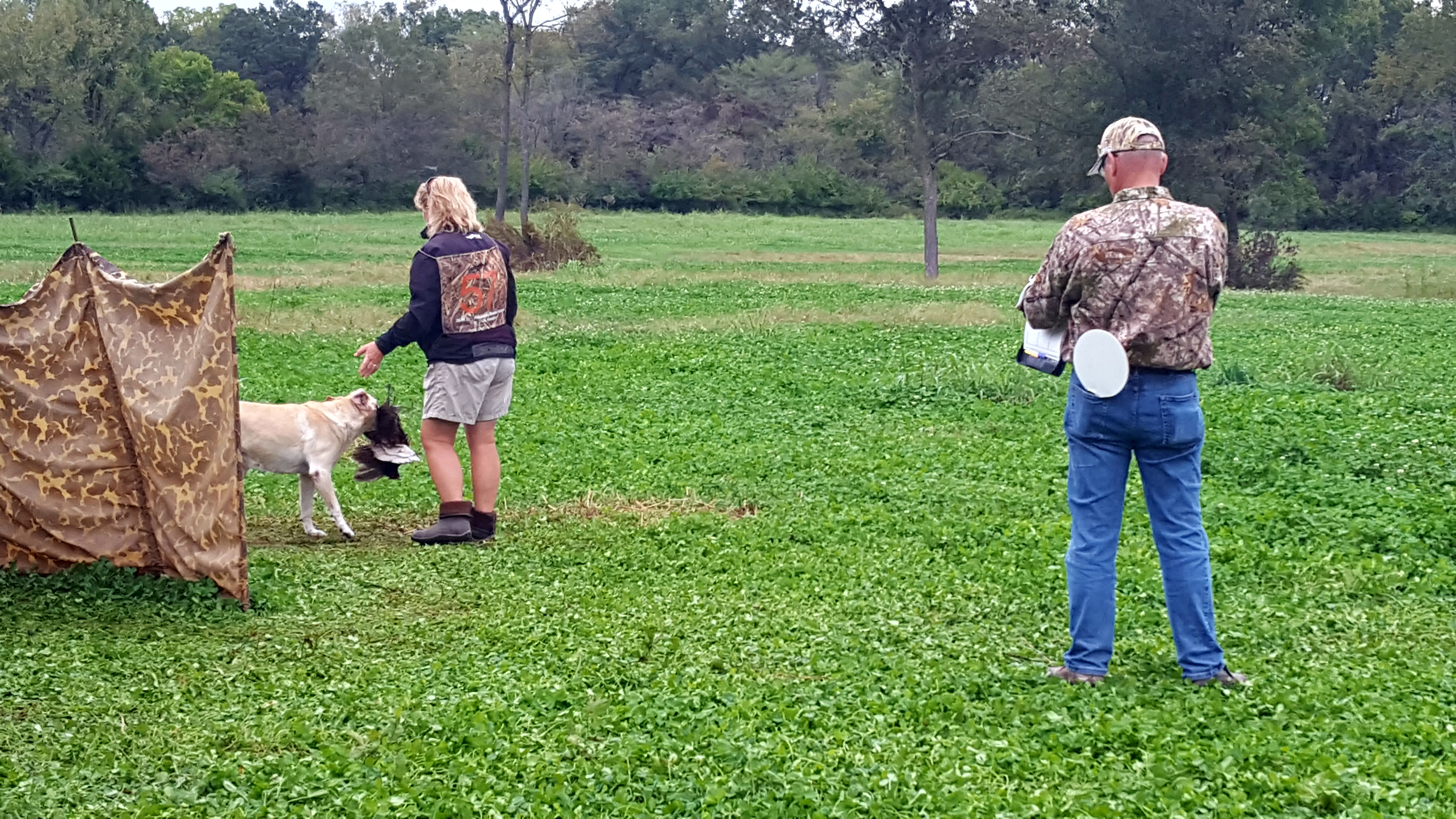

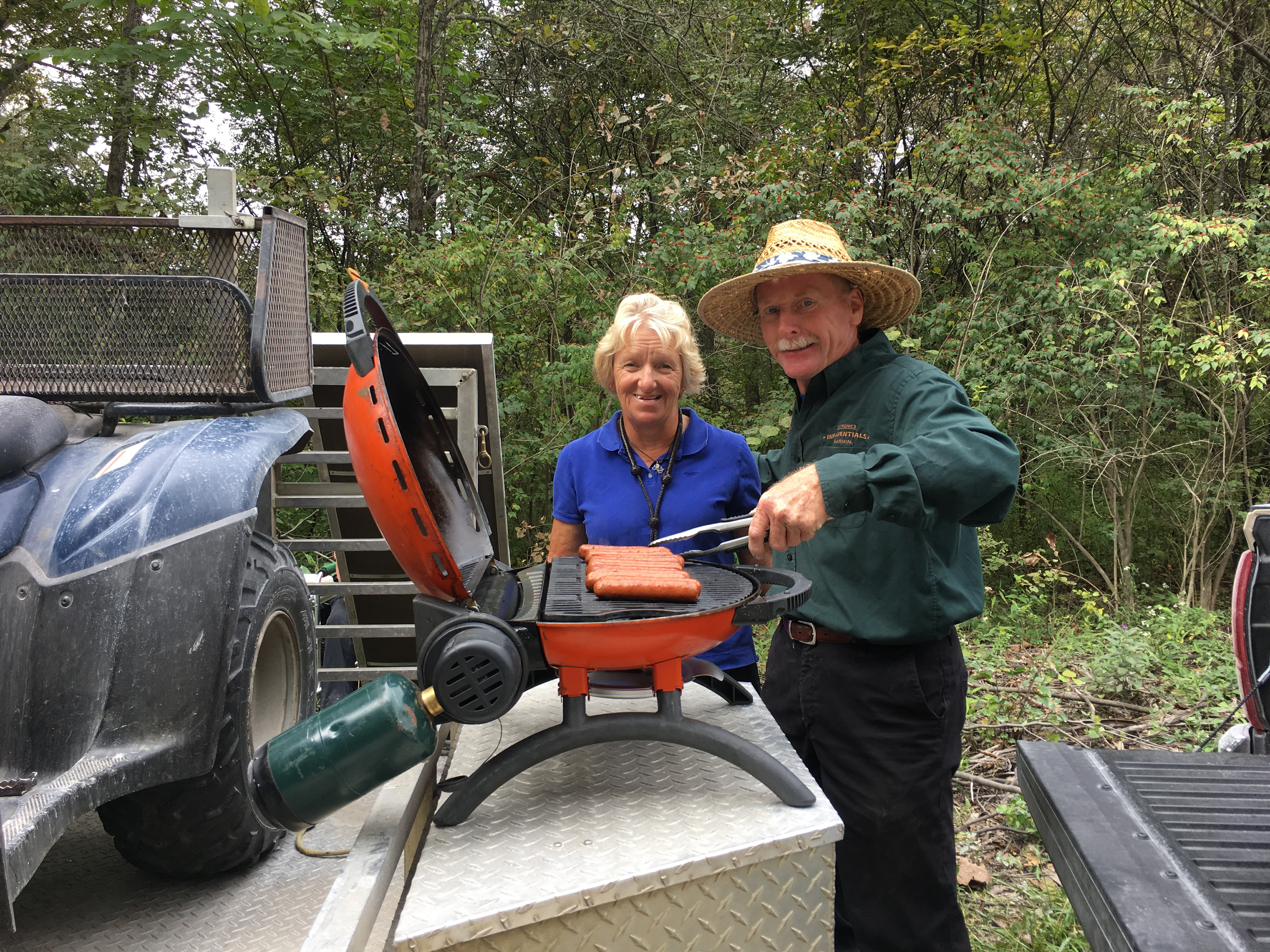
We started the day with heavy fog which presented a beautiful landscape but not conducive for running dogs.
As the sun rose higher and the wind picked visibility improved and the test dog went off at 8:15 a.m. Dogs continue to have difficulty on the go bird, middle mark. We have seen several large hunts and handles.
The wind has shifted to the east presenting even more suction from the flyer station on the middle bird.
Flight A should finish this series about 11 a.m. Tuesday and will move to a water series next.
Flight B Melissa Robinson-Shanks MNRC Reporter
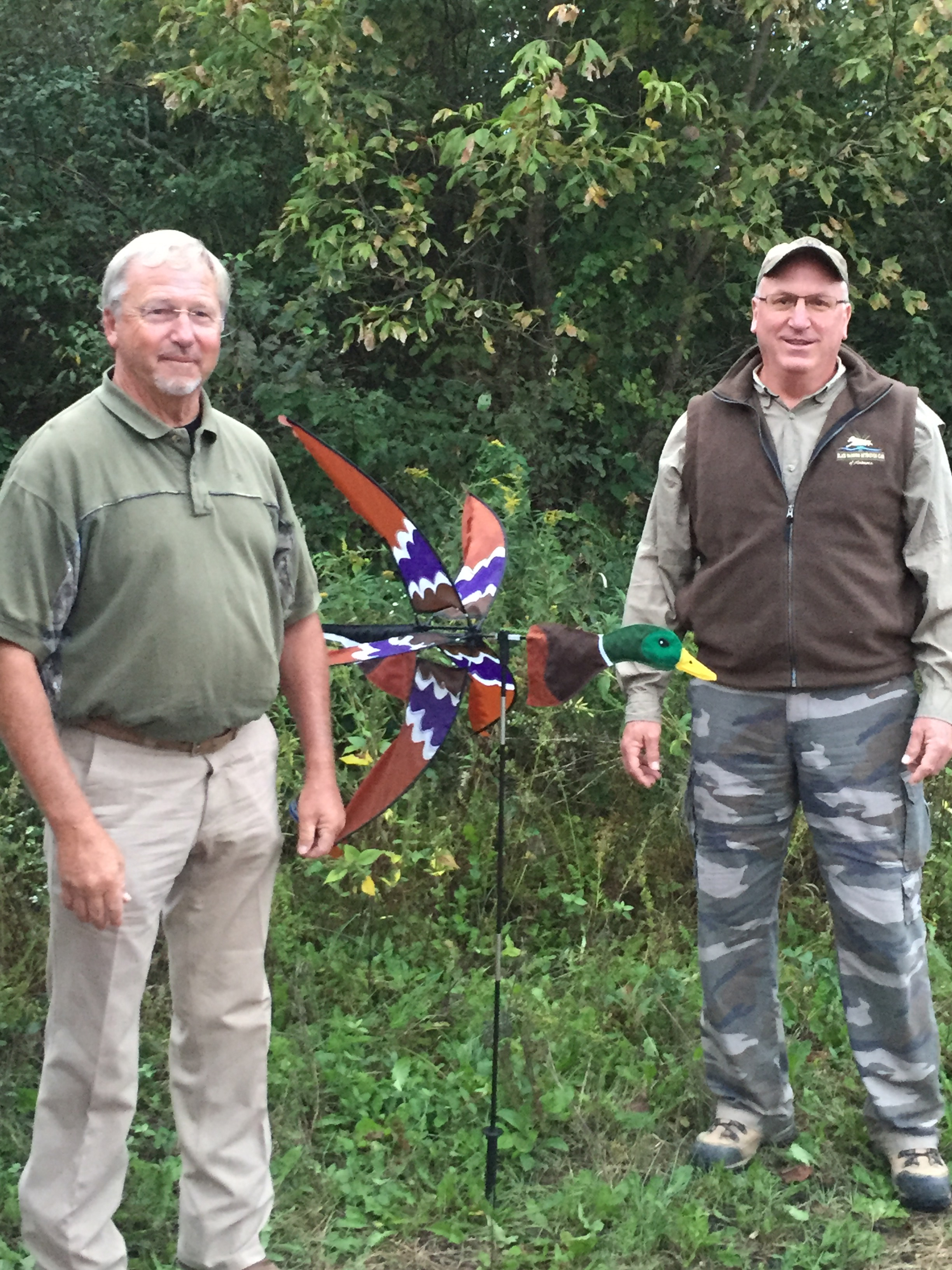

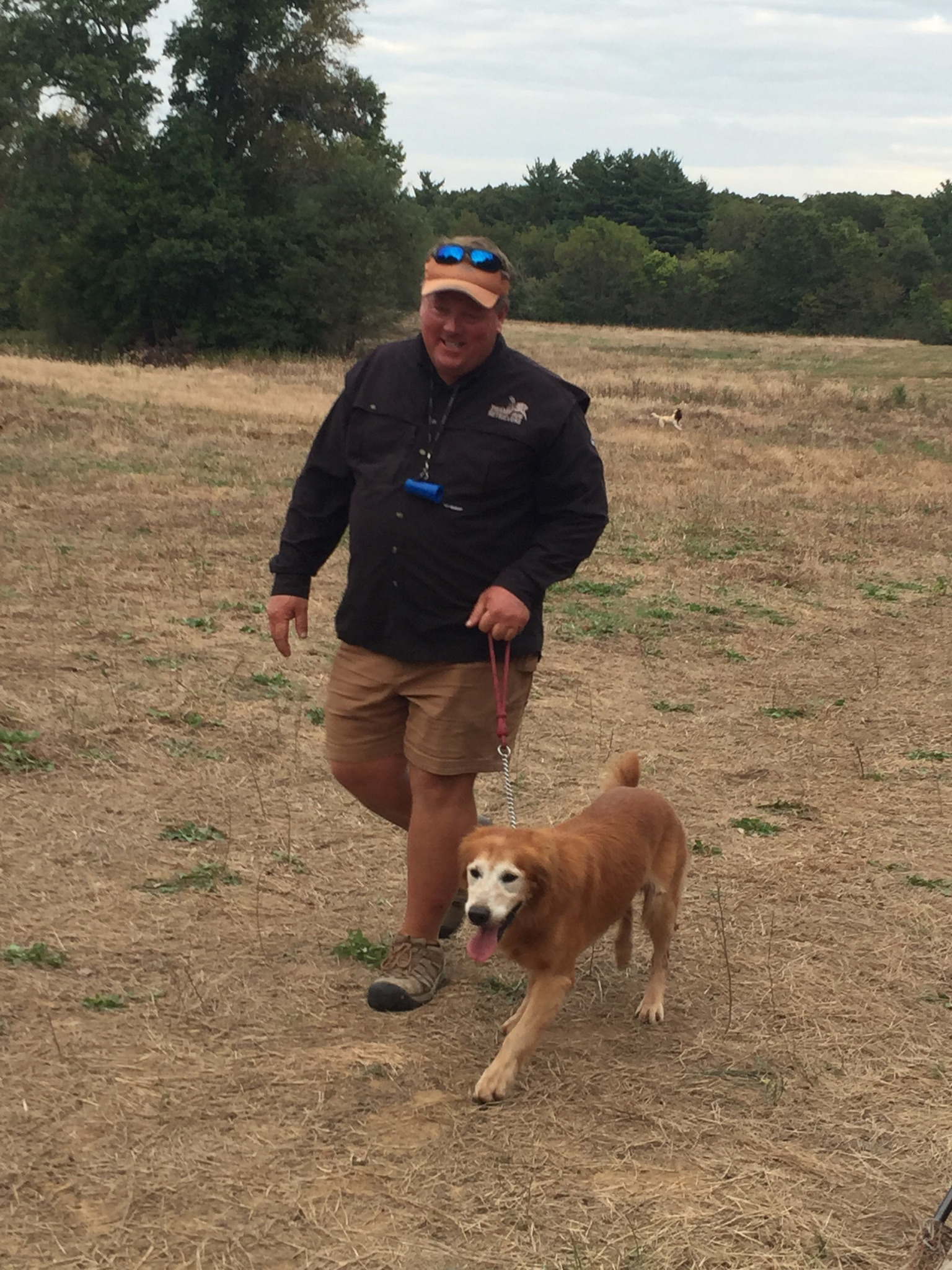
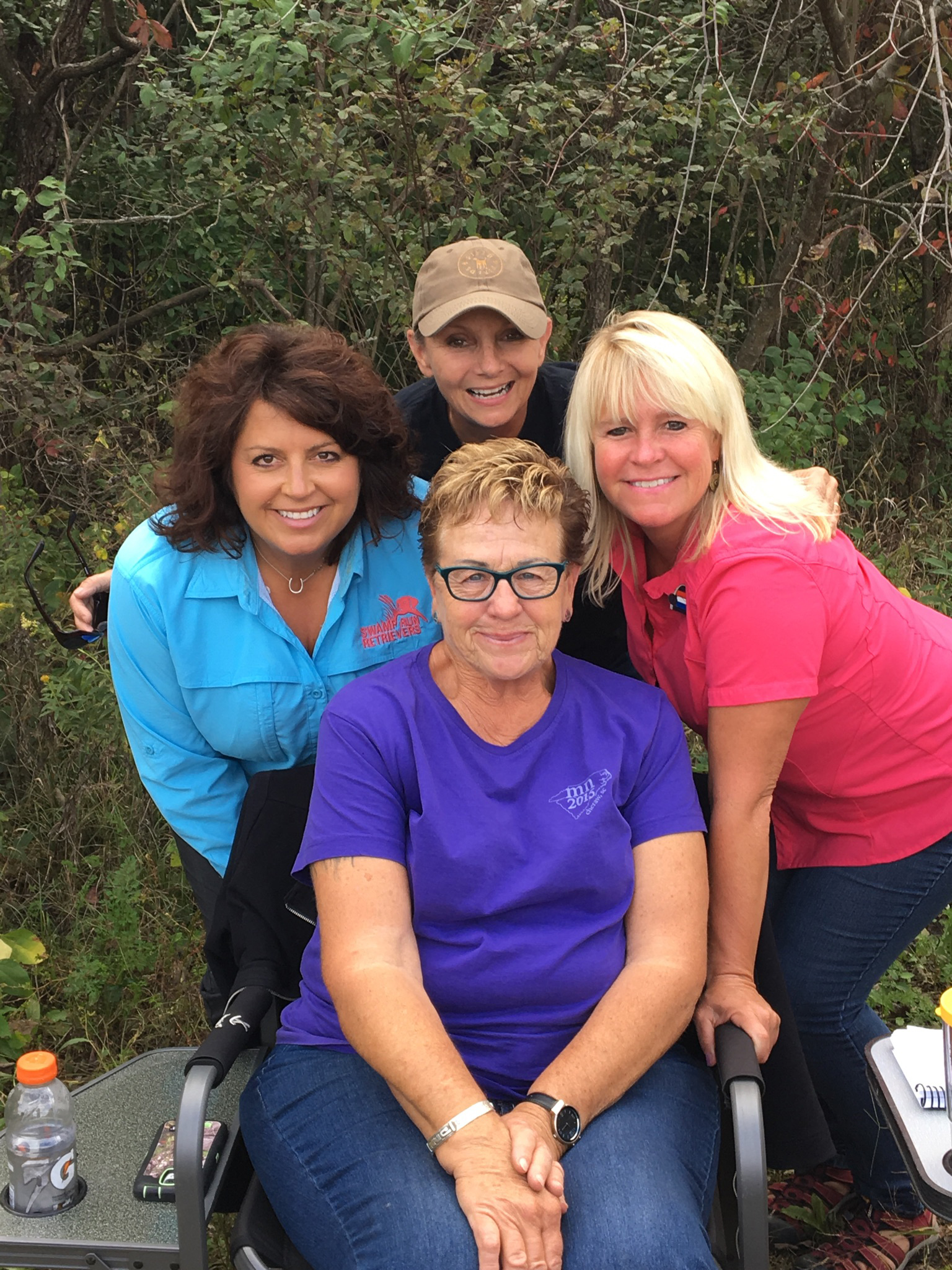
Flight B ran test dogs at 7:50 to continue its second series today, at Dove Field. The six bird test challenged many dogs. Most notably, the lack of any wind made locating pheasants difficult, especially the flier.
Judges also made a point of reminding handlers to challenge the blinds. A pink plastic swimming pool filled with ice was available to help cool dogs down after running. The day went smoothly in every way, about as good as it gets. The test shut down around 6:30pm, and will finish tomorrow morning.
We’ll start with Handler #134 at 7:30am. Once finished, we’ll move to Lake #30.
-Julie Luther
Flight C Frank Barton MNRC Reporter
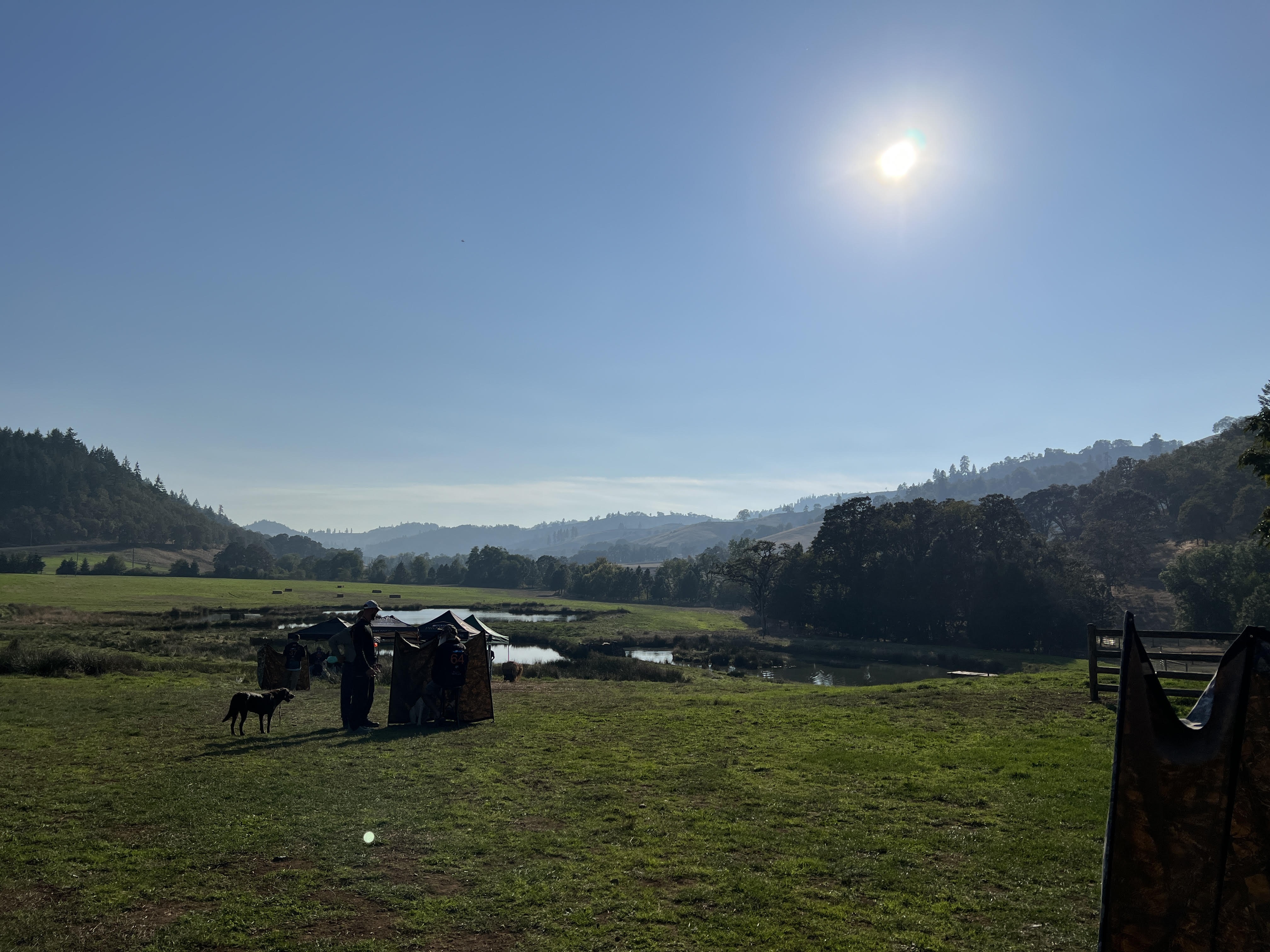
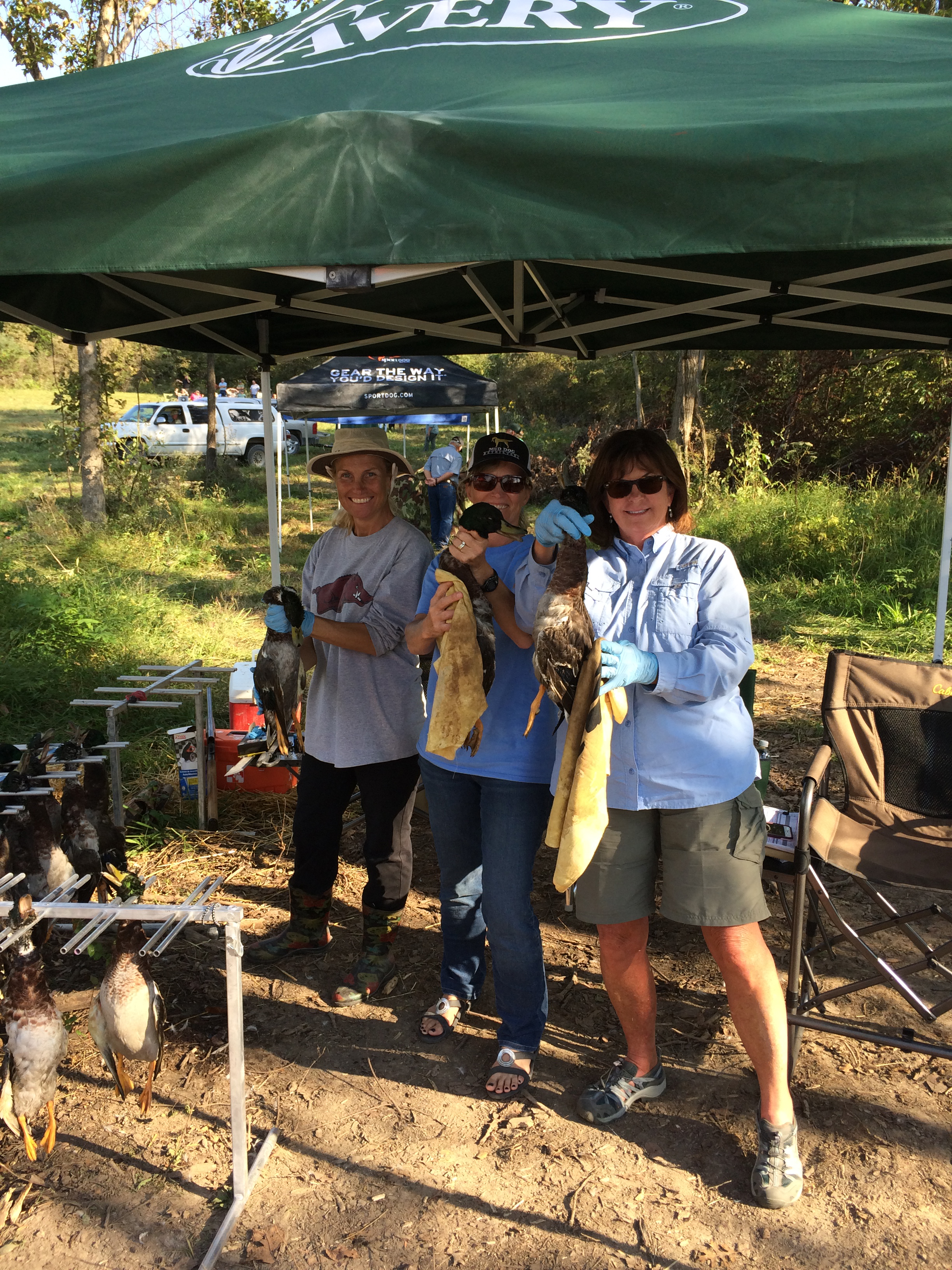
Flight C started their second series test at Lake 35. This is a water test with a diversion shot and blind. The test begins with the handler remotely sitting the dog in front of the last holding blind. Bird #1 is a dead duck thrown across the water left to right and lands behind a medium patch of cover. Bird # 2 is a dead duck thrown to the handler’s left and lands in heavy vegetation ob the base of a hill. Bird #3 comes from behind and to the right of the handler and lands on an island about 22yds from the line.
The marks on this test were pretty easy for most dogs to negotiate. The blind, however was another matter. The tricky down the shore blind created a significant challenge for the Flight C dogs. More than one dog was seen staying on the bank of the island and not in the water which was clearly the line to the 99 yard blind. Later in the afternoon a very distinct corridor thru the cover in the water provided an avenue for dogs and appeared to help the dogs that ran later in the afternoon.
The short 22 yard go bird combined with a remote sit was too much for some dogs and a pickup dog was needed to retrieve the bird that caused the failure. The test overall was taking just under 8 minutes per dog to finish and for the moat part went smoothly throughout the day.
However at 9 a.m. the local warning sirens went off just as Blake Lemish was about to start the test with dog 32. This lasted for several minutes but it did not appear to cause any problems for him as his dog appeared to have a good performance.
The MNRC committee organizers at Flight C believe that this test will finish at 1:30 on Tuesday and we will move to the lake 21 land/water for our 3rd series.
Flight E Missy Lemoi MNRC Reporter
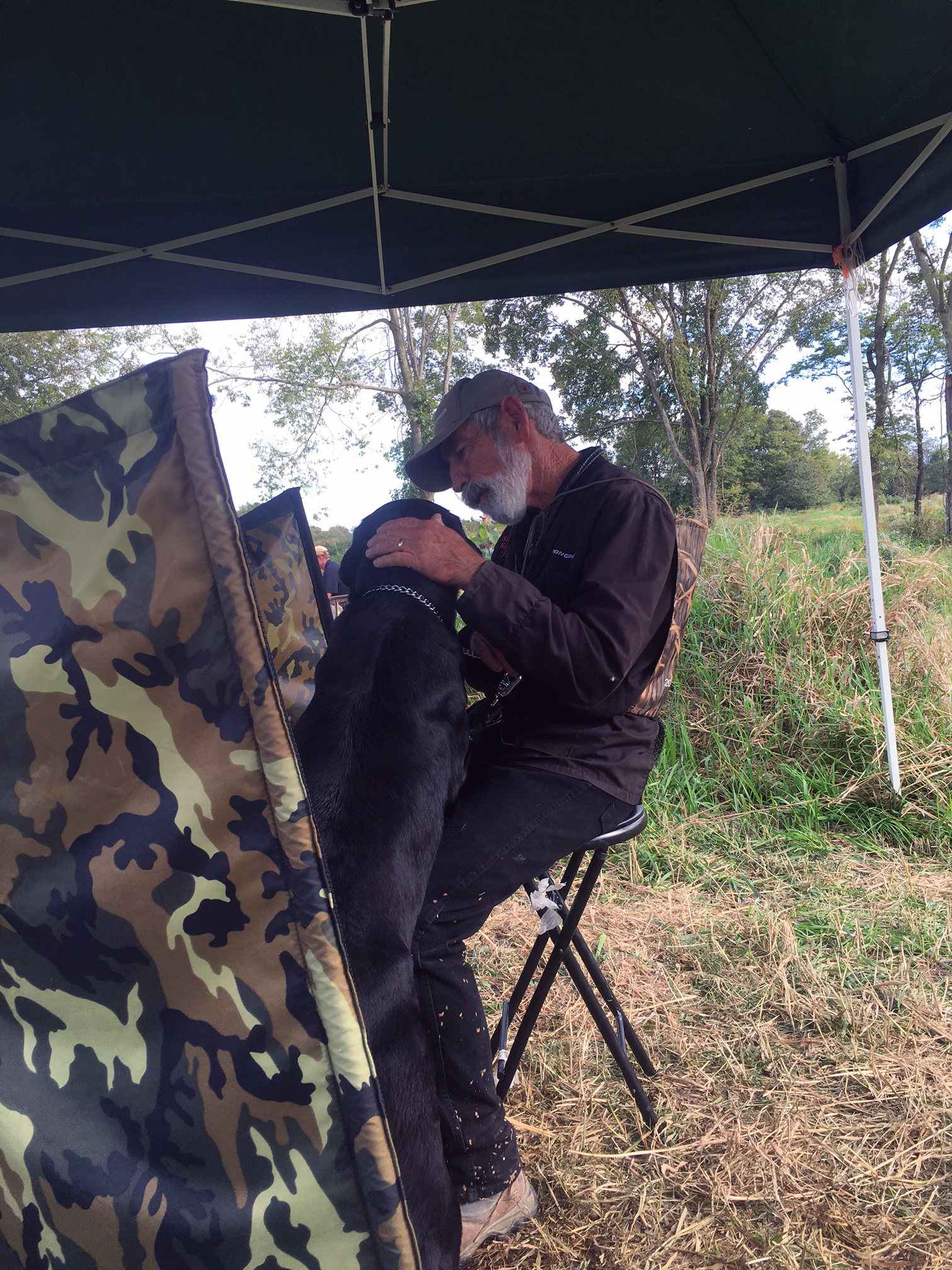

Day 3 started out gloomy and cloudy, but quickly turned to partly cloudy with patches of 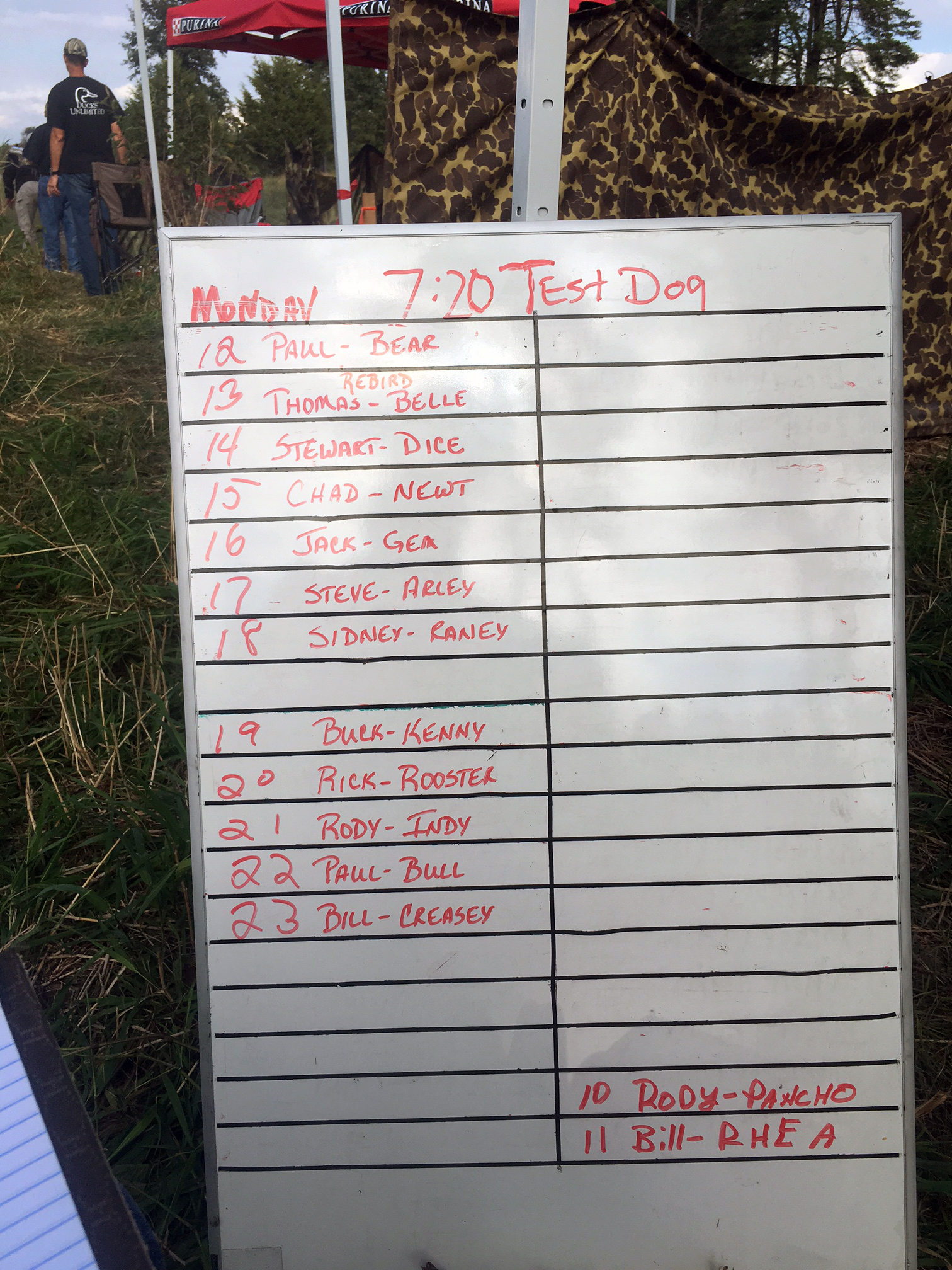 blue sky as Flight E continued to run their second series at Lake 30. The wind direction switched throughout the day starting out blowing lightly at the handlers’ backs, then in their faces and by the end of the day it was a crosswind blowing left to right which made the land bird easier for the dogs to find.
blue sky as Flight E continued to run their second series at Lake 30. The wind direction switched throughout the day starting out blowing lightly at the handlers’ backs, then in their faces and by the end of the day it was a crosswind blowing left to right which made the land bird easier for the dogs to find.
The work continued to be the same as Sunday’s work with the majority of dogs picking up the marks cleanly. There were still dogs who took the dry route to the bird across the pond. There were a few more problems with the blinds as dogs did not want to hold the line angling away from the shore. Other dogs did not want to get off the shore and get into the pond.
During the day on Sunday, the flight was averaging 9-10 dogs per hour. The average dropped to 7-8 dogs per hour today. The series ended with the last dog running a little before 6:00 PM. Series 3 starts Tuesday morning with dog #47 at East Field Lake 6.
Flight F Alice Woodward MNRC Reporter
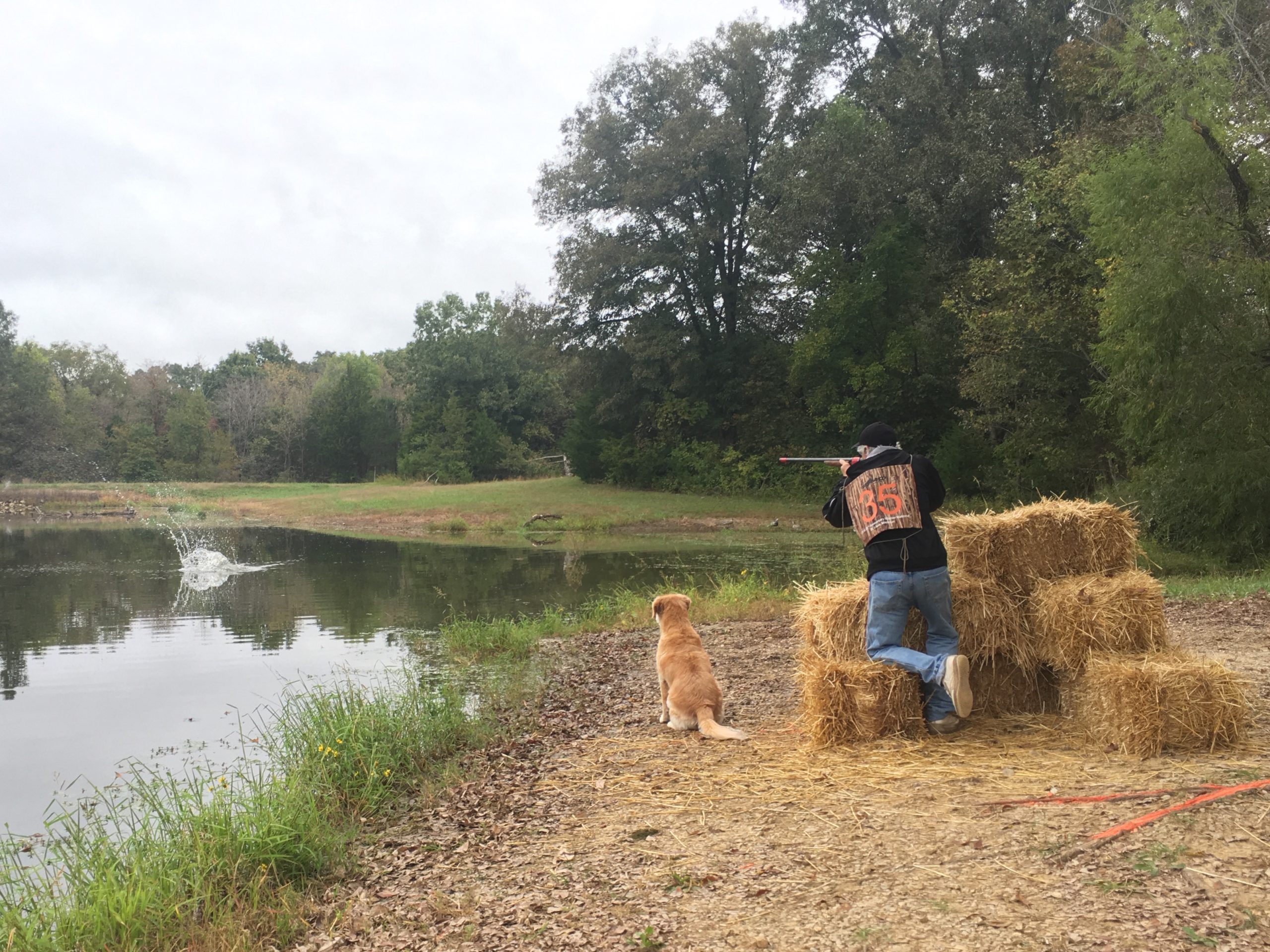
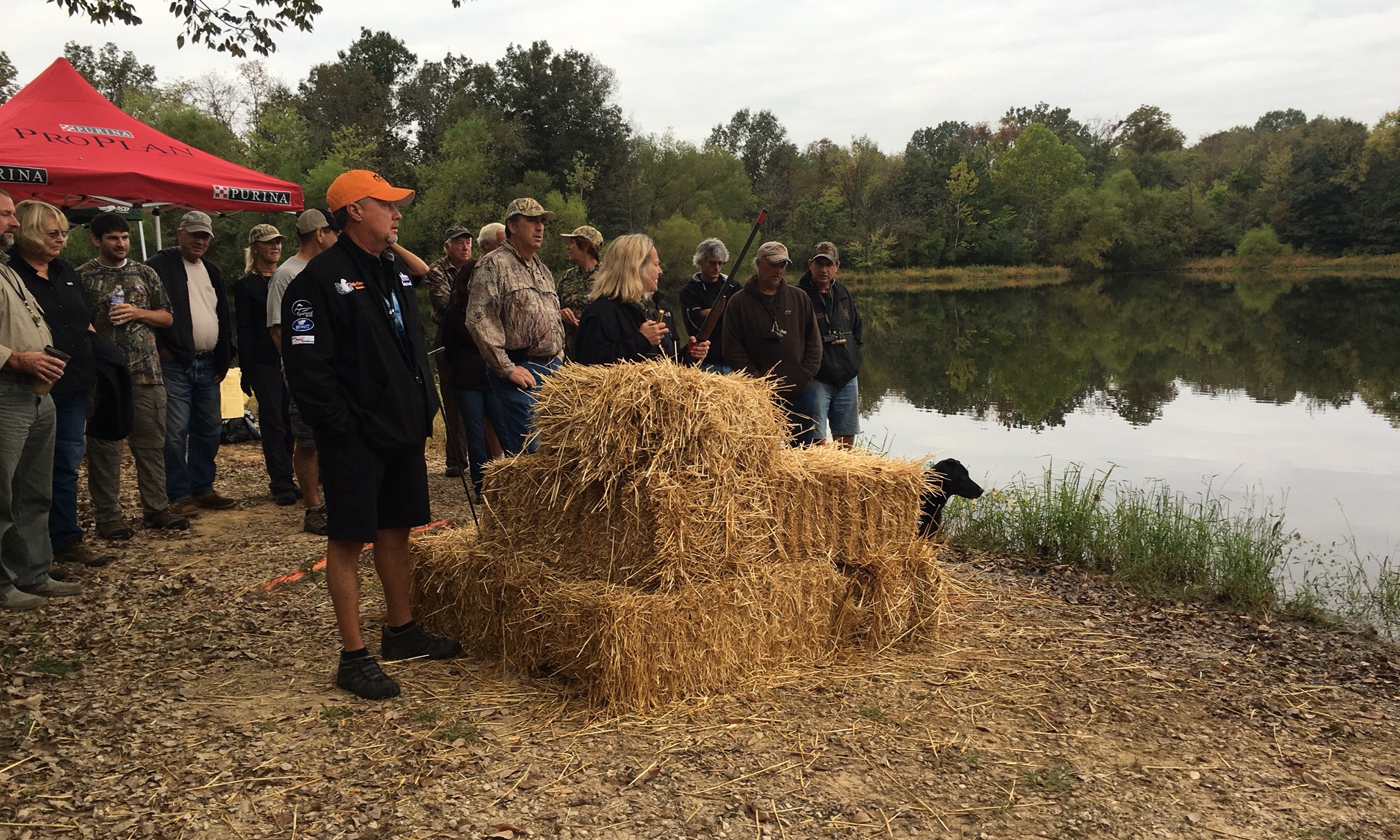
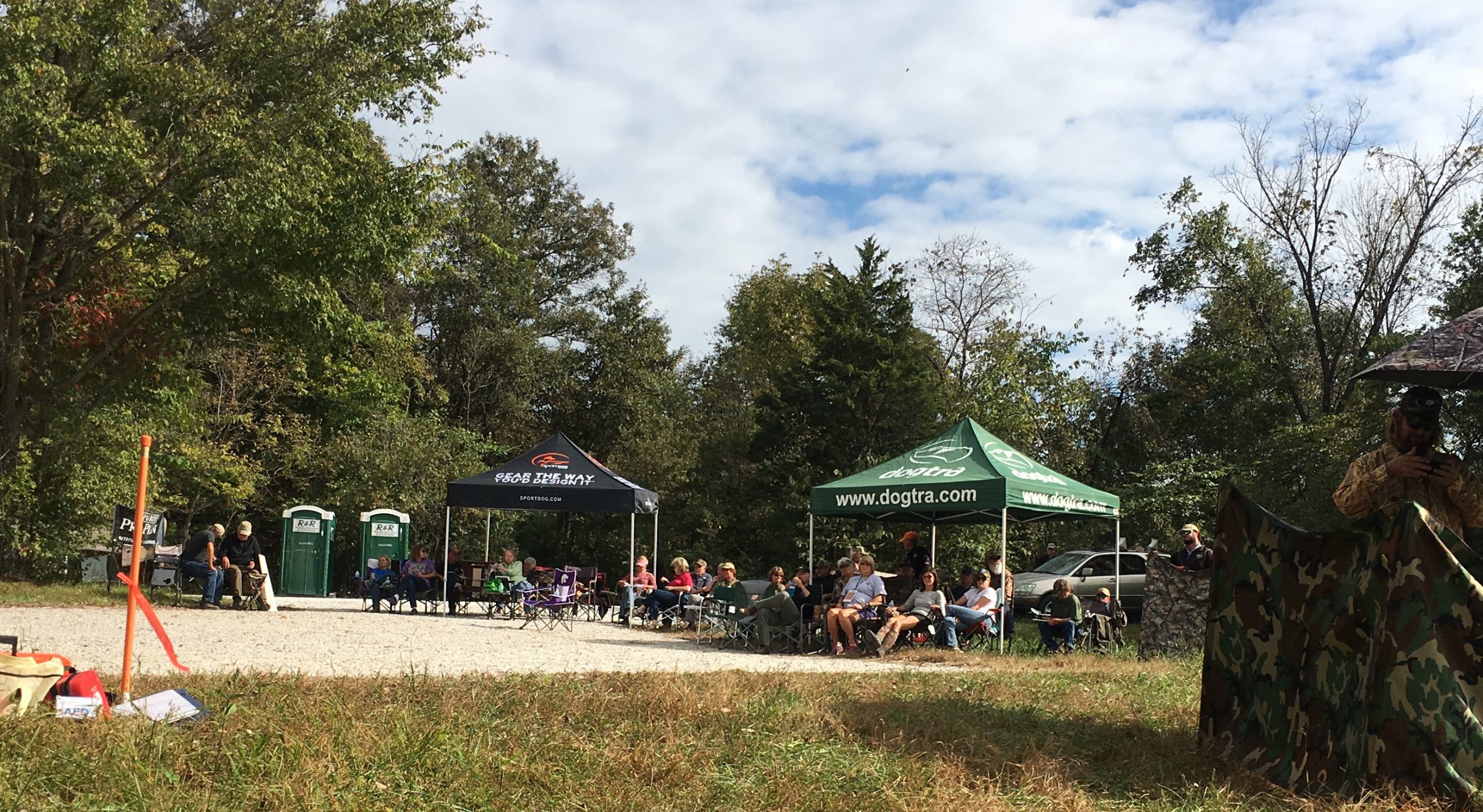

Lake 20 – This test is an all-dead-bird water test consisting of a triple and a single water blind with a diversion shot. All birds are mallard drakes thrown by wingers, each preceded by a duck call, with the handler starting the test by blowing his own duck call. The test is set on one end of “Lake 20” and the morning is overcast. Wind for most of the day ranges from light to occasionally no wind.
The judges presented a scenario: You and your hunting buddies are going to hunt teal on this pond. You arrive a little late and find that your buddies are already hiding in the trees along one edge of this pond. They have their decoys set out on a corner of a cove on the edge of this pond. You take up a position in your own blind – which is constructed of hay bales – after leaving your obedient duck dog sitting outside the blind on the water’s edge on your left. You blow your duck call and immediately the action starts when a duck traveling from right to left is shot by one of your hiding buddies, dropping it out well up on land in the open field. It is the longest mark in the test.
A second duck then also comes out of the trees, also traveling from right to left, and your buddies, very good shots, drop it right on the pond edge just across from you a little to the left of the decoys they have put out. These two birds land almost in line with each other but not quite. A third bird (a “wiper bird”) comes from an even closer spot in the trees, again traveling from right to left and after it arcs over the lines to both the previous falls this bird drops into open water. (Can we spell “breaking bird”?)
While your dog is returning from the retrieve of the farthest of the three ducks, your hunting buddies shoot one more bird (aka a diversion shot) and you run a water blind past the three falls to the other side of the pond. The line to this blind goes very tight to the fall of the wiper bird and finishes by going through a narrow neck of water bounded by a clump-lined shoreline on the dog’s right and a submerged log on the dog’s left. This area is lunging water for taller dogs.
The first test dog, “Boogie” handled by Jaime Forqueran, retrieved the wiper bird then went for the longer of the two marks. After hunting to the blind location he worked his way back to pick up the longer mark. When sent for the short bird he launched well to the right of the line to this bird, worked into the trees that line the cove, then appeared perplexed so he was handled to retrieve the short bird. The blind went very well.
The second test dog, “Babe” handled by Corinne Clavey, showed great enthusiasm for the wiper bird but stayed steady. After retrieving this bird she quickly retrieved the short bird after a small and tight hunt. She then overran the long bird for a quick handle back to the bird. The blind went well.
The first running dog went to the line at 8:47 a.m. As the test unfolded it was calculated that the dogs are running this test at the rate of 7 and a half dogs an hour. Work wrapped up for the day about 6 p.m. with about 36 dogs to run on Tuesday. Testing will resume at 7:30 a.m. with dog # 117.
The dog work on this test, albeit its scary appearance, was for the most part strong. Many dogs completed without handles, clearly recognizing the “over and under” concept, being comfortable with the very tight lines, and not being thrown off by the wiper bird. When a handle was needed it was usually a quick handle. There were, however, a small number of breaks on the exciting go bird. The blind gave some dogs trouble especially in the narrow “neck” area (where they wanted to get out of the water and multiple casts were needed to discourage this) but others completed it without incident. A submerged log on the left of the line to the blind had the potential to confuse dogs on both the marks and the blind, since end of the log was directly in line with the fall of the wiper bird earlier retrieved and it looked like another floating bird.
Sunday, October 2, 2016
Flight A Jack Combs MNRC Reporter
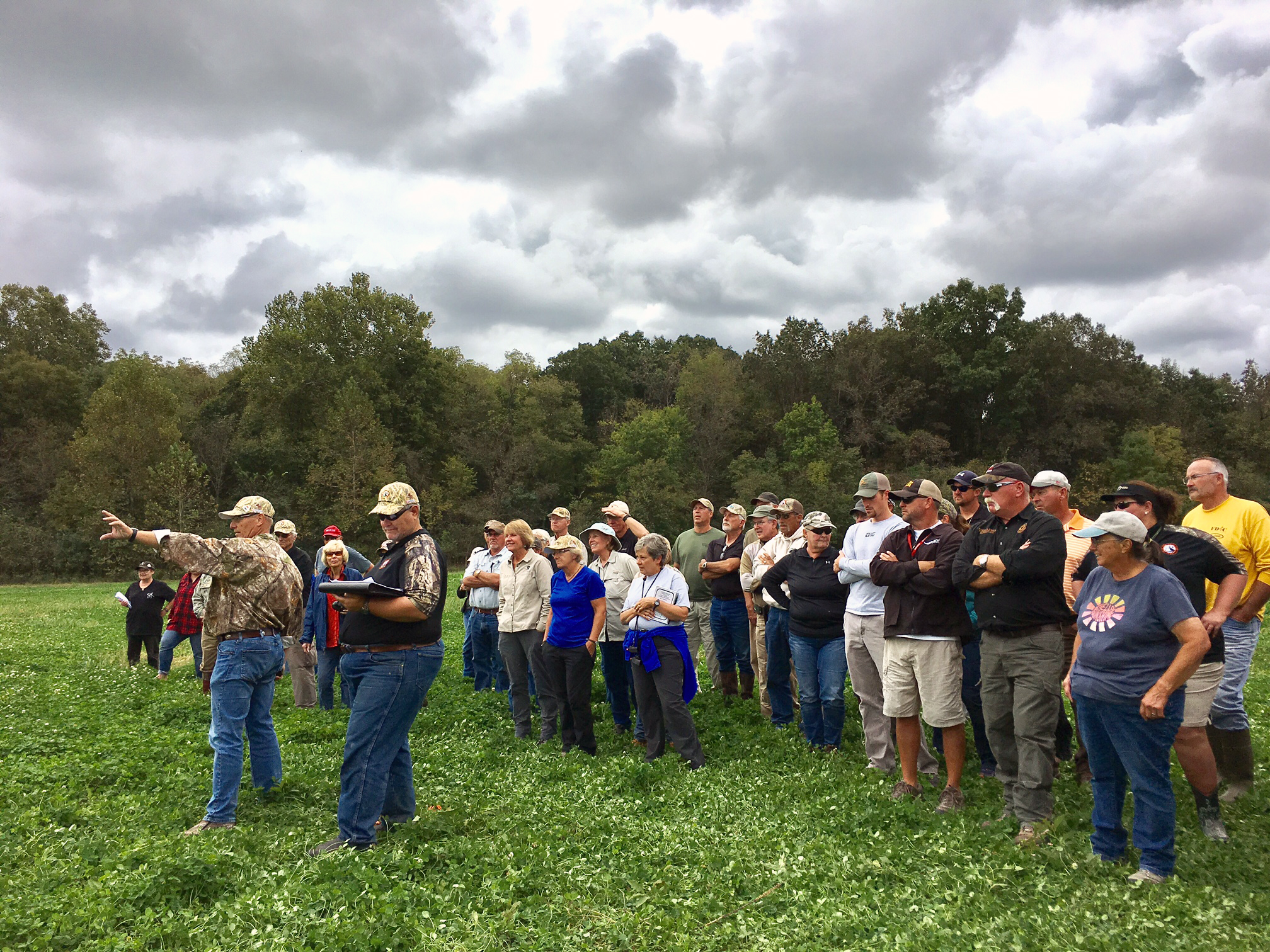

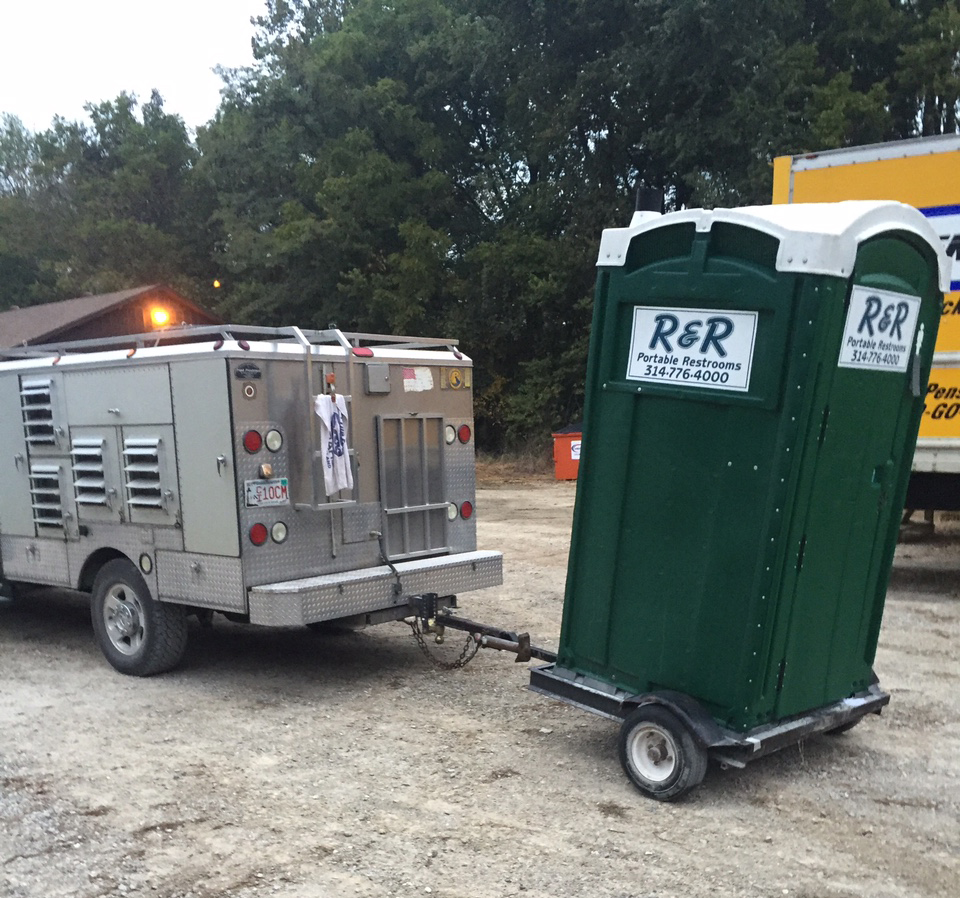

Flight moved to the second series at the ABC Field, a land triple. The test begin with a pheasant thrown left to right landing 85 yards from the line. The second bird is a pheasant flyer from left to right landing around 110 yards from the line. The third bird id thrown angle back and landing 110 yards from the line.
After the dogs pick up the marks, on the way in fro the third mark there is a diversion bird thrown towards the line and landing 25 yards from the line. The handler receives the dog in the holding blind, after passing the diversion bird, and two blinds are planted. The handler runs blind #1 45 yards from the line but tight to the back of station three. After picking up blind #1 the dogs picks up the diversion bird and runs blind #2. Blind 2 is to the left of blind one and deeper, 112 yards. After picking up blind 2 the working dog honors to finish the test.
Dogs have handled on each of the three marks but the middle bird which is the go bird is causing the most problems. Dogs are hunting short and they are close to the back of the flyer station.
The weather is overcast with very little wind so scenting conditions are poor.
We will start Monday morning running dog 64.
Flight B Melissa Robinson-Shanks MNRC Reporter
Flight B packed up from the first series, moved, and was set up for the second series in less than an hour. (That’s the official line and we’re sticking to it.) Thanks to a great crew and a lot of friendly, helpful folks who made it go so smoothly.
Second series started around 3pm. 119 dogs were called back to The Dove Field for a land series triple. First bird (center flyer 150 yards being shot left to right) R). On the opposite of the tree line and 20 yrs closer to the line, the second bird comes out right to left at 95 yards. Swinging back to the right is a 80 yard bird being thrown right to left.
One the way back from the last bird picked up, a diversion bird comes out of a station off to the left at 41 yards. that should only be picked up after running two blinds (one past the diversion at 105 yards the other under the arc of the 2nd mark at 150 yards.
The field is gently rolling with a mix of light and heavy cover. A profusion of wild onions grows around the line. The strong onion scent doesn’t seem to interfere with the dogs. Dogs have plenty of room to hunt up their marks–perhaps a bit too much on occasion. But it’s a nice break from the tight marks that plagued a lot of dogs in the first series. Twenty dogs ran today, ending about 6pm. For those who stayed to the end, there was a round of Alice’s green “LPM.” Rumor is that tomorrow morning will start with a bit more a Capella singing from this increasingly convivial group.
—- Julie Luther
Flight C Frank Barton MNRC Reporter

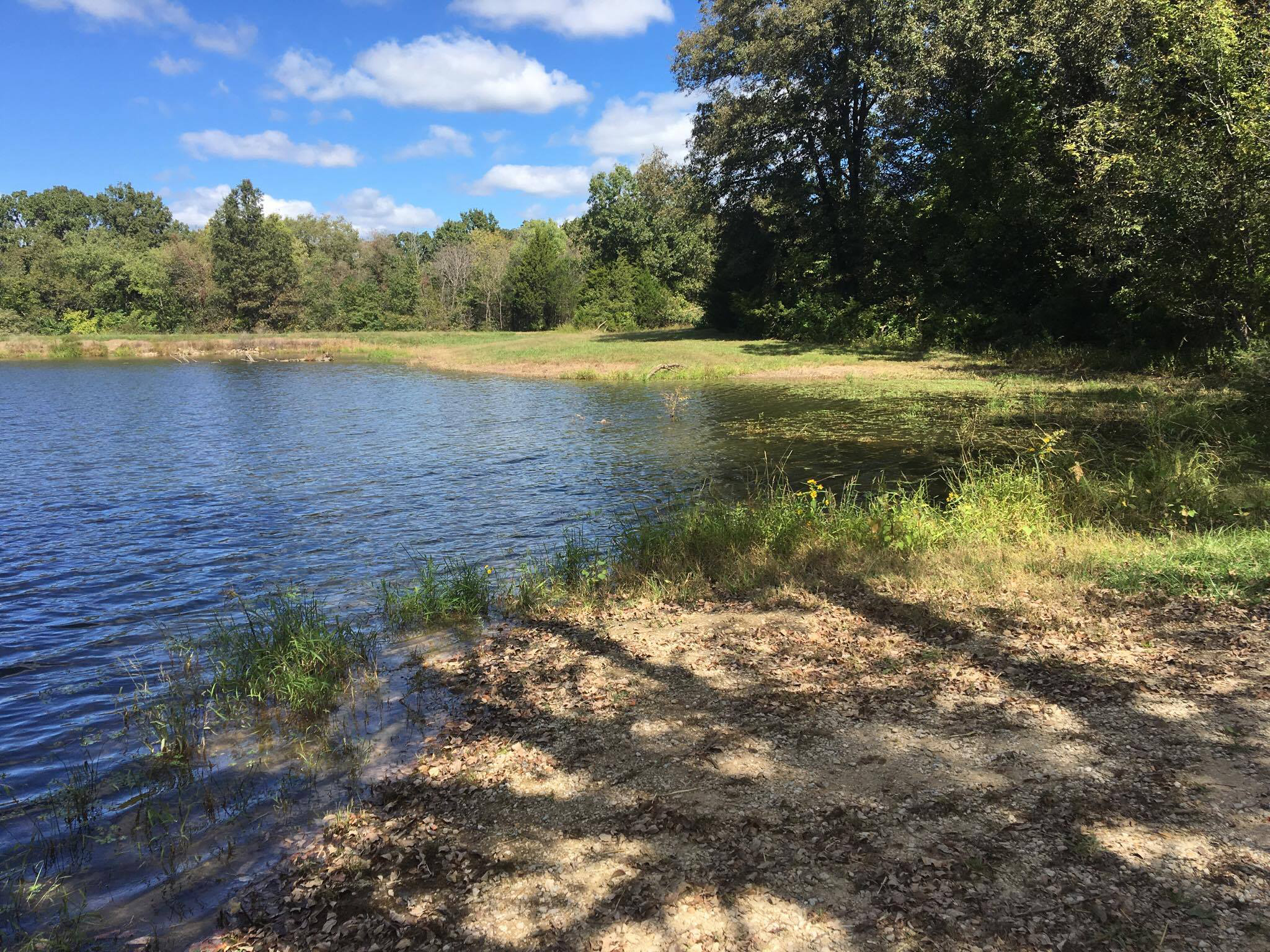
Flight D Dorothy Ruehman MNRC Reporter
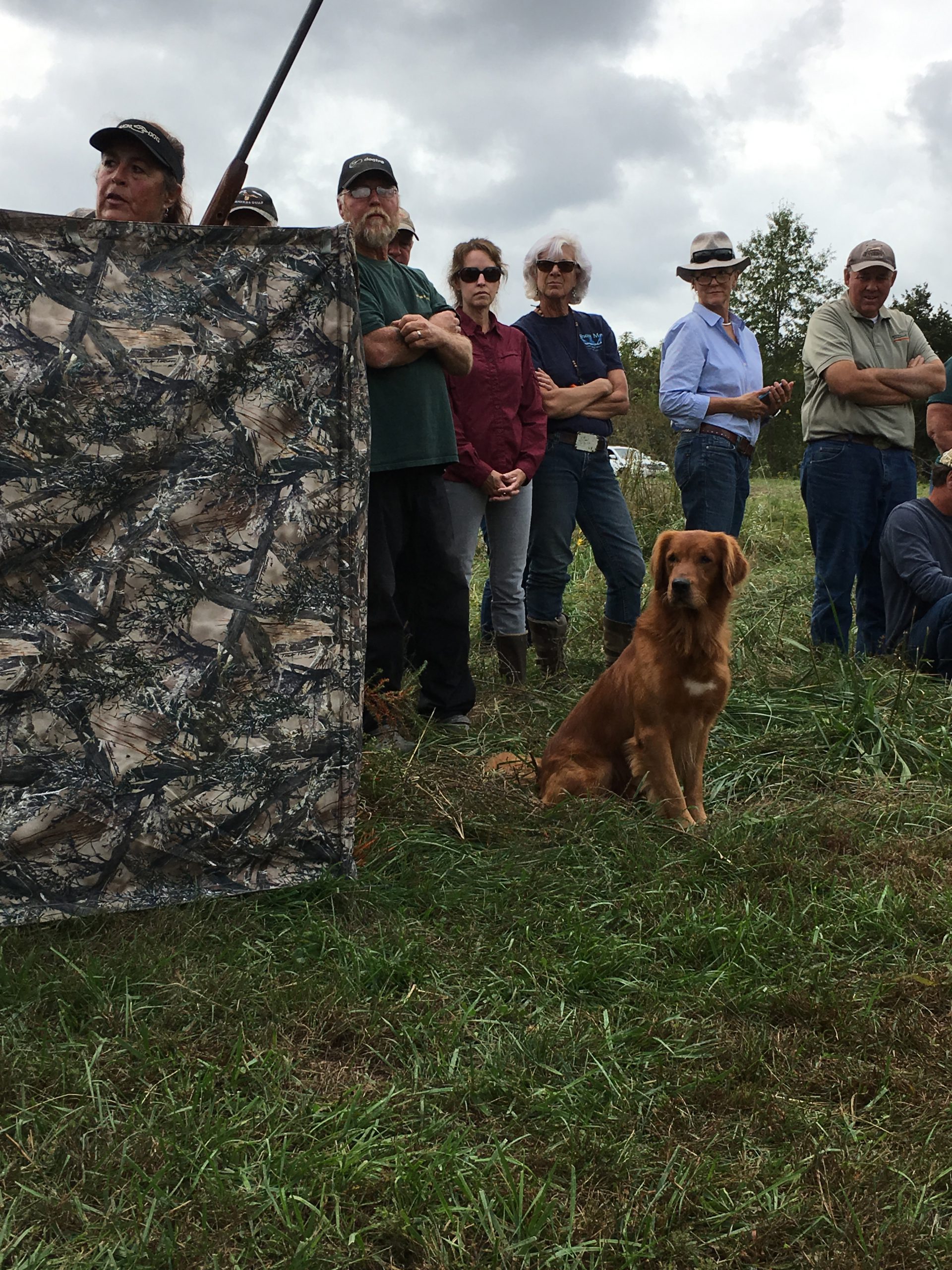
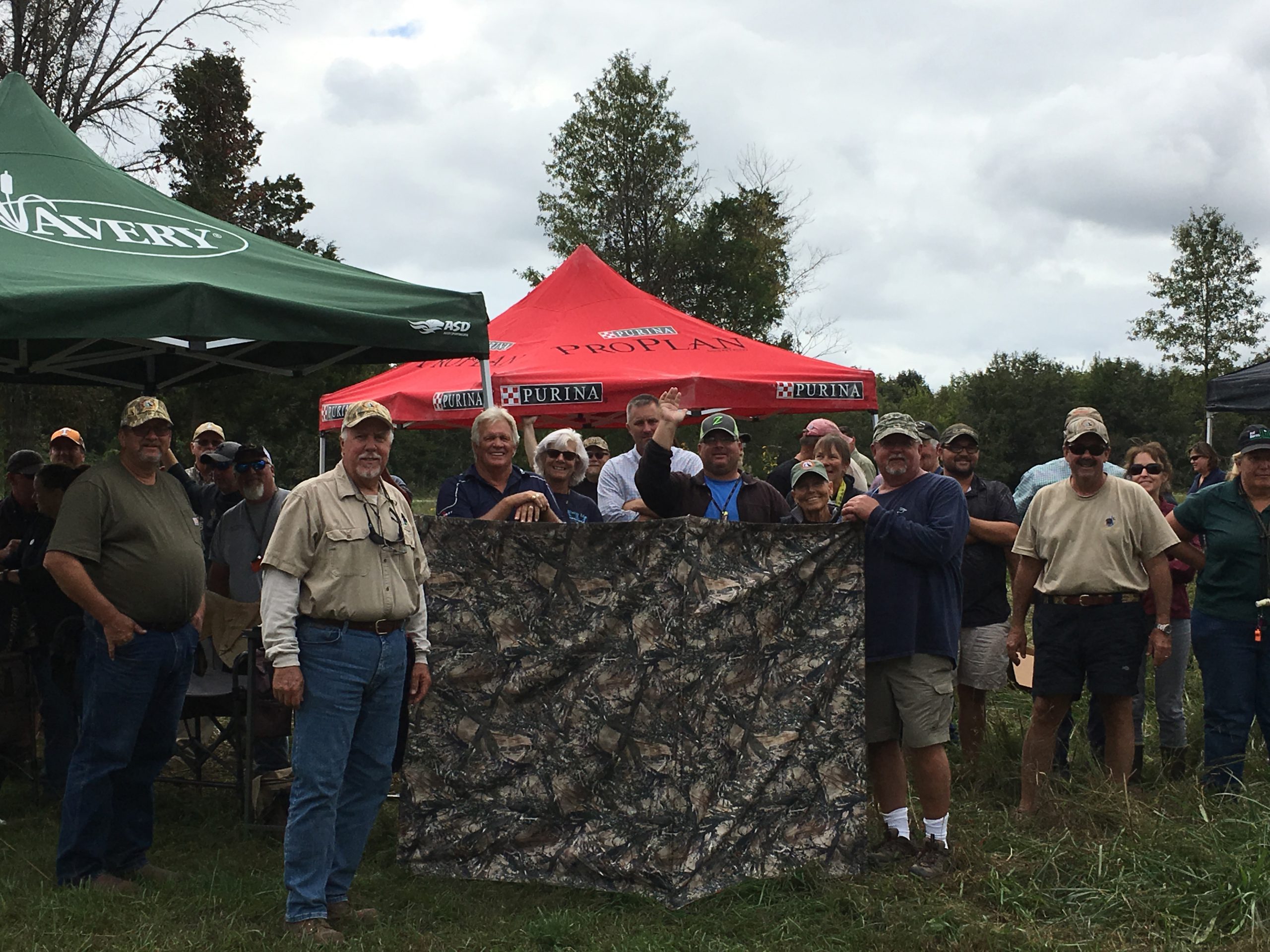
It’s lunchtime on Sunday, and Flight D is beginning its Second Series on Lake 11 – A duck hunt on a beautiful pond, tucked away and surrounded by trees. A soft Southwest breeze gently rustles the tall grasses bordering the pond, and high-pitched songs of persistent insects of all kinds and sizes is our music. Twisted “snake sticks” litter the ground on the way to the line. They appear to bother only unsuspecting humans.
Dark, threatening clouds surround the test site keeping the sun hidden and the 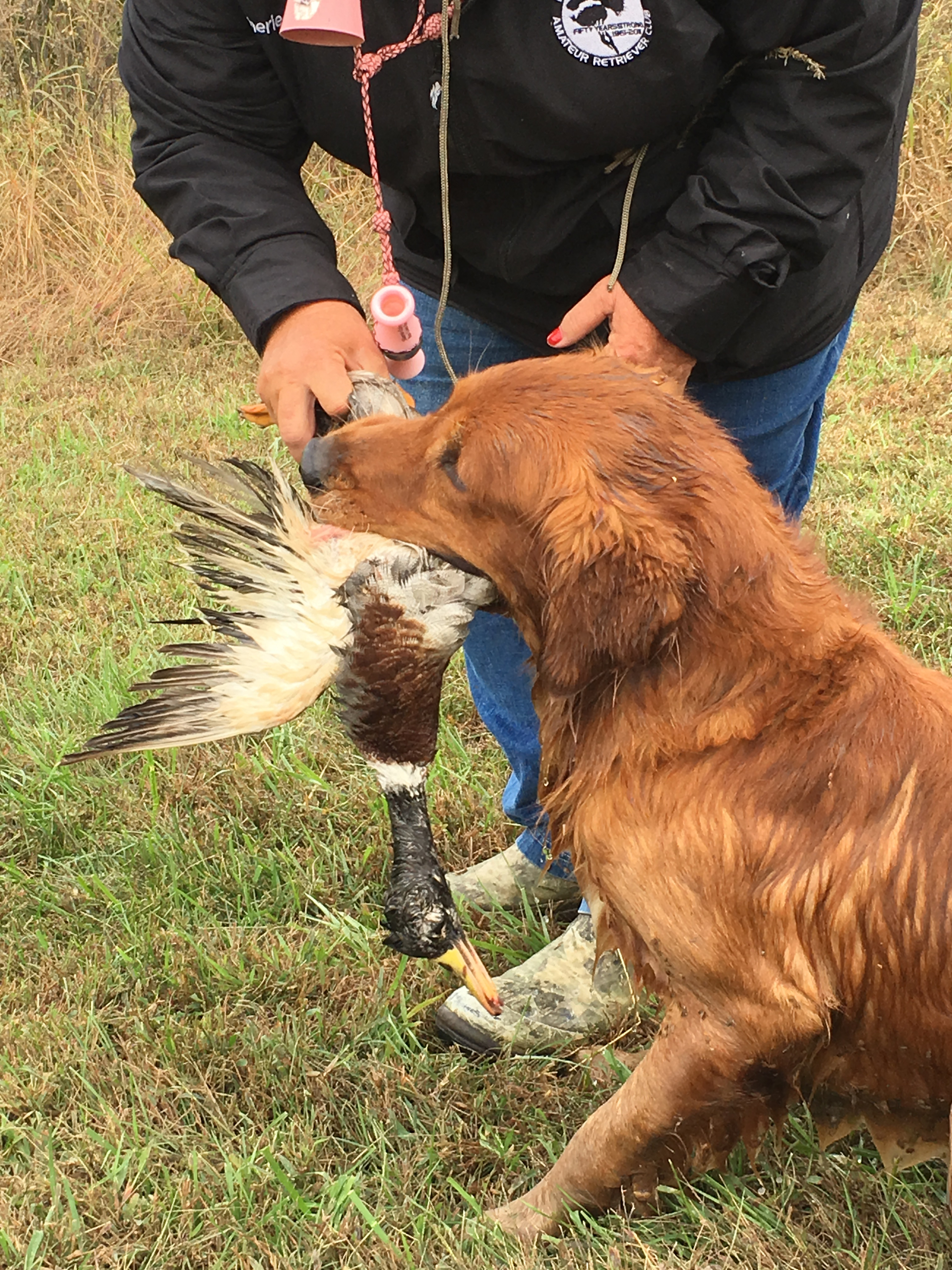 temperature pleasant. This makes seeing the water triple in the trees a challenge. Handlers will start each run sounding off with duck call. Competing retrievers will experience a remote send – watching the middle bird, thrown left to right; a right bird, pinched in and thrown from right to left; and a fairly wide swing to the left and final mark, thrown from left to right. Each gunner station will quack before throwing a bird.
temperature pleasant. This makes seeing the water triple in the trees a challenge. Handlers will start each run sounding off with duck call. Competing retrievers will experience a remote send – watching the middle bird, thrown left to right; a right bird, pinched in and thrown from right to left; and a fairly wide swing to the left and final mark, thrown from left to right. Each gunner station will quack before throwing a bird.
Working dogs will hear a diversion shot after successfully picking up their middle mark. The shot will set up a blind, located to the right of the middle bird’s fall area. A lovely “blind bouquet” marks the location of the single water blind.
Ghosted by: Ruby Ruehman
Flight E Missy Lemoi MNRC Reporter
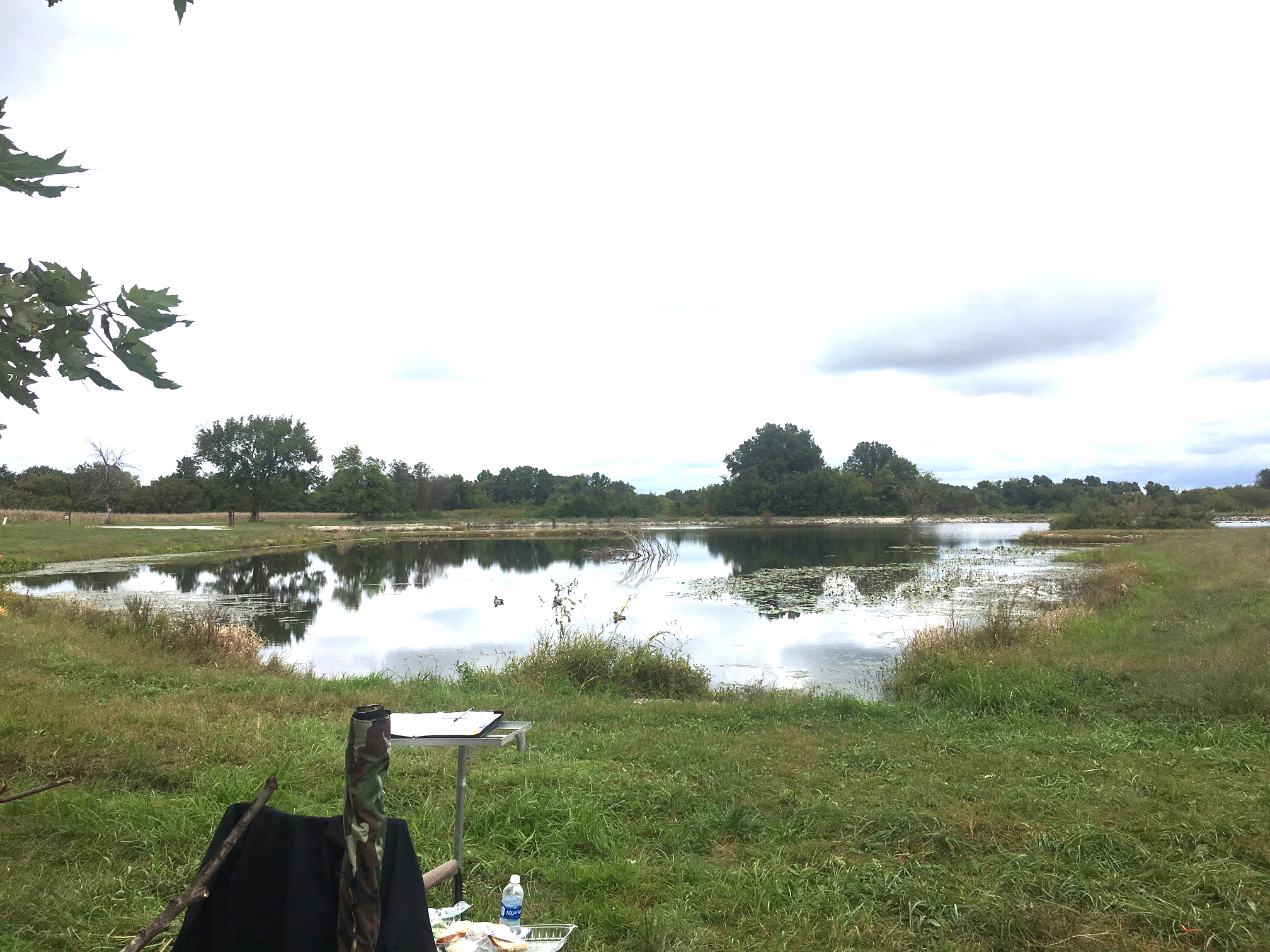
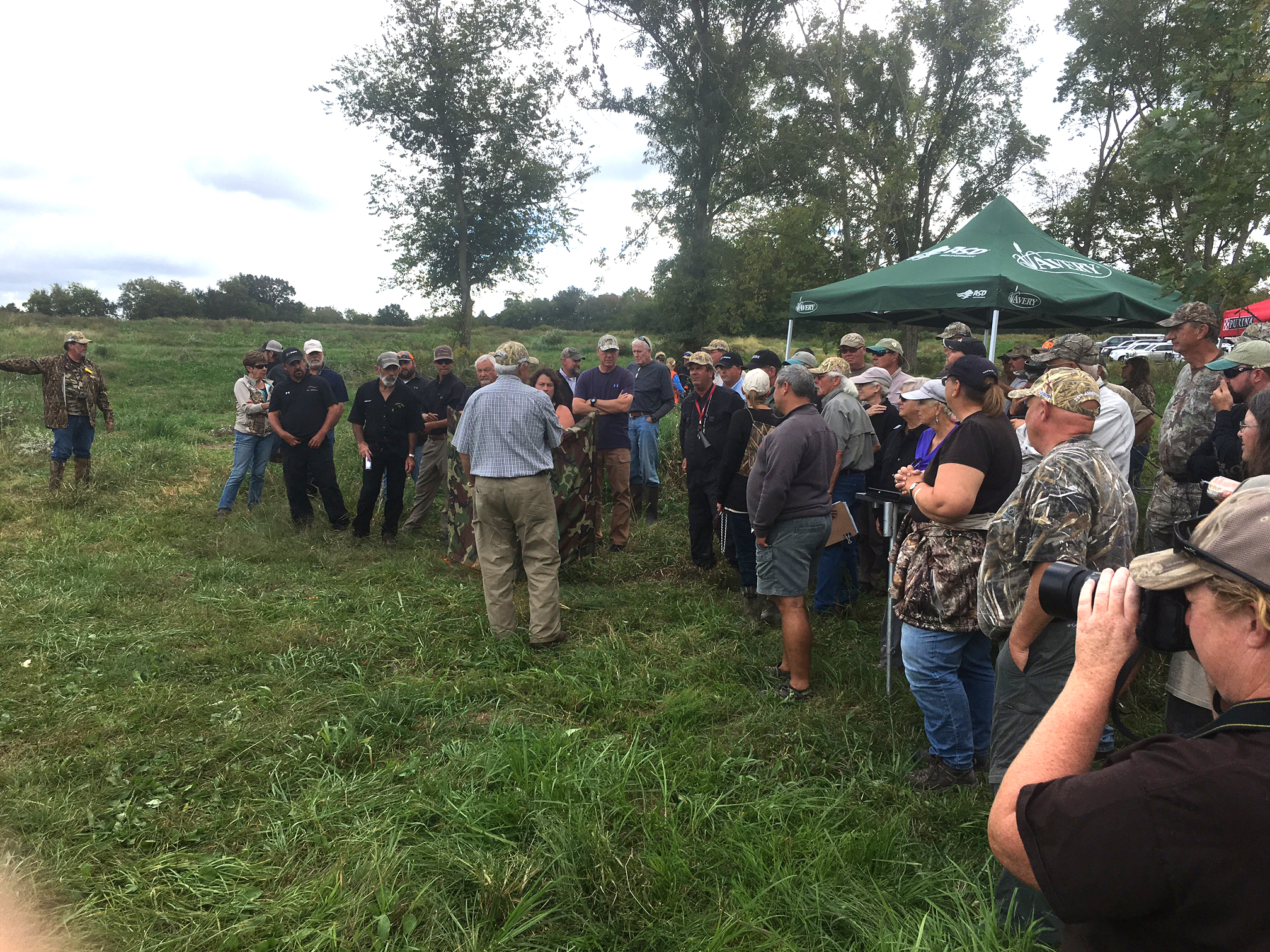
Flight E resumed their first series with dog #102 under cloudy skies and calm conditions. The dogs continued to do a good job on the test finding all three marks without assistance from their handlers. The last dog finished running the first series at 10:38 AM.
The flight reconvened at Lake 30 with 129 dogs to run the second series – a land water triple with a remote sit and a shoreline blind. The test is averaging 5 – 6 minutes per dog. The first dog, #24, went to the line between 1:00 and 1:30 PM under cloudy skies threatening rain. The wind was light and variable, sometimes blowing in toward the line.
The handlers are directed to sit their dogs on either the left or right side of the holding blind and then to step back into the blind and pick up the handler’s gun. The test is kicked off by the handler blowing a duck call. The call is answered by a call and a duck thrown left to right from a blind across the pond landing in cover. The next call comes from behind an evergreen tree on the same side of the pond as the line. The bird is thrown left to right and angled in toward the line landing sometimes in cover and sometimes in a cut track in front of cover. The third bird is thrown right to left from behind another evergreen tree and sails well out into the water landing in lily pads near a lone tree with a big splash.
Handlers have the option of sending their dogs remotely or they can step out of the holding blind to release their dogs. So far, everyone has chosen to get the go bird first, but there has been a 50-50 split as to which bird is picked up second. Several dogs have run down the shore and then jumped in the water when even with the go bird. There have been hunts and handles on the land bird. Most dogs have found the bird across the pond unaided, but several have retrieved the bird without getting wet. A diversion bird is shot as the dog returns with the second retrieve.
After the last mark is picked up, the dog is then sent on a blind down a shore line with an angle entry into the water, under the arc of the go bird, through lily pads to a point. Some dogs have had trouble taking the angle entry into the water on the blind.
At about 3:00 PM, the threat of rain became a reality just as this reporter was going to the line! Fortunately the ensuing shower was light and brief! The test was halted a little after 6:00 PM. The first dog to run on Monday morning will be dog #81.
The handlers are directed to sit their dogs on either the left or right side of the holding blind and then to step back into the blind and pick up the handler’s gun. The test is kicked off by the handler blowing a duck call. The call is answered by a call and a duck thrown left to right from a blind across the pond landing in cover.
The next call comes from behind an evergreen tree on the same side of the pond as the line. The bird is thrown left to right and angled in toward the line landing sometimes in cover and sometimes in a cut track in front of cover. The third bird is thrown right to left from behind another evergreen tree and sails well out into the water landing in lily pads near a lone tree with a big splash.
Handlers have the option of sending their dogs remotely or they can step out of the holding blind to release their dogs. So far, everyone has chosen to get the go bird first, but there has been a 50-50 split as to which bird is picked up second. Several dogs have run down the shore and then jumped in the water when even with the go bird. There have been hunts and handles on the land bird. Most dogs have found the bird across the pond unaided, but several have retrieved the bird without getting wet. A diversion bird is shot as the dog returns with the second retrieve. After the last mark is picked up, the dog is then sent on a blind down a shore line with an angle entry into the water, under the arc of the go bird, through lily pads to a point. Some dogs have had trouble taking the angle entry into the water on the blind.
At about 3:00 PM, the threat of rain became a reality just as this reporter was going to the line! Fortunately the ensuing shower was light and brief! The test was halted a little after 6:00 PM. The first dog to run on Monday morning will be dog #81.
Flight F Alice Woodward MNRC Reporter

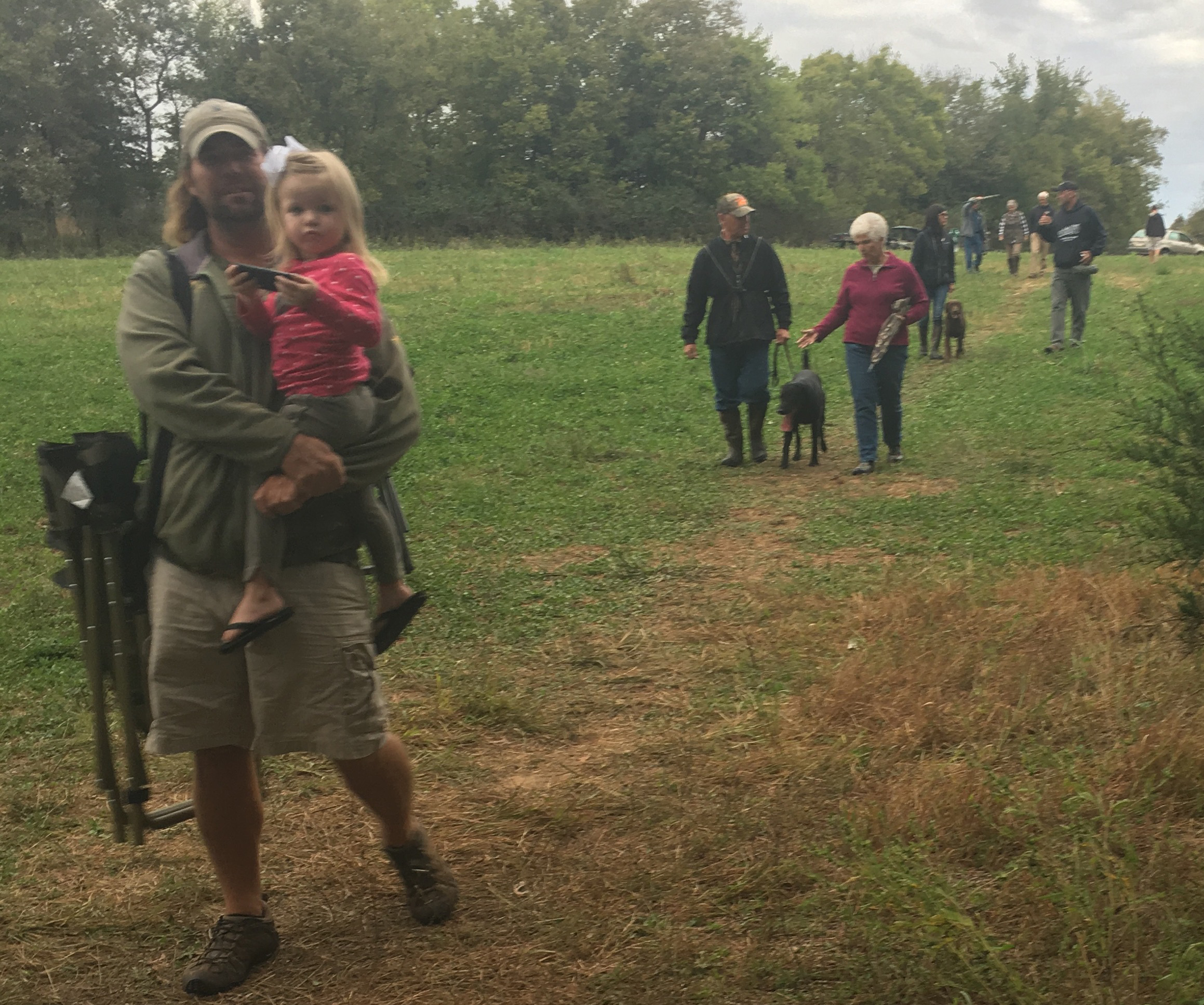
Today’s overcast sky finally managed to produce a light light rain by mid afternoon but it did not last for long. At 5:45 PM F Flight has finished its first series today — of course without enough time to set up anything for the next series. This flight is reportedly scheduled to go to “Area 20” for tomorrow’s testing but that is unofficial – wait for the official announcement.
The work today overall has been somewhat stronger than the work on the same test yesterday, with fewer handles on marks and fewer rough jobs.
Sunday morning begins the second day of testing on Series One, starting with dog # 73. The set-up crew had everything ready for the first test dog to go to the line at 7:52 a.m. This was “Boogie,” who had run the test as first test dog yesterday. Boogie pinned all three marks and lined both blinds.
The judges then decided to run a second test dog, one that had not run yesterday. Steve Durrence stepped up to the challenge with “Juice.” While working on finding the right hand memory mark, Juice hunted her way into the flier and retrieved it. She was then handled on the right hand mark when sent for it again. Juice was impressed by the diversion bird but Steve handled her off it successfully for a good job on both blinds.
Sunday morning weather remains overcast but the skies are brighter than yesterday. The wind is substantially more “dog friendly” this morning because yesterday’s treacherous left-to-right crosswind that was blowing flier scent across the path to the right-hand memory bird has ceased.
Although the ratio of handles to non handles in the first 12 running dogs appeared to be about the same as that of yesterday’s first 12 dogs (around 50-50), my impression is that this morning’s hunts are shorter and the handles on marks go easier than yesterday’s. Small trails have formed through the up-front cover patches that were flaring dogs yesterday, giving handlers a fighting chance this morning of getting good initial lines. Flier falls continue to vary substantially, and some are super long. “Mark your own fliers!!”
First Day, Saturday, October 1, 2016
Flight A Jack Combs MNRC Reporter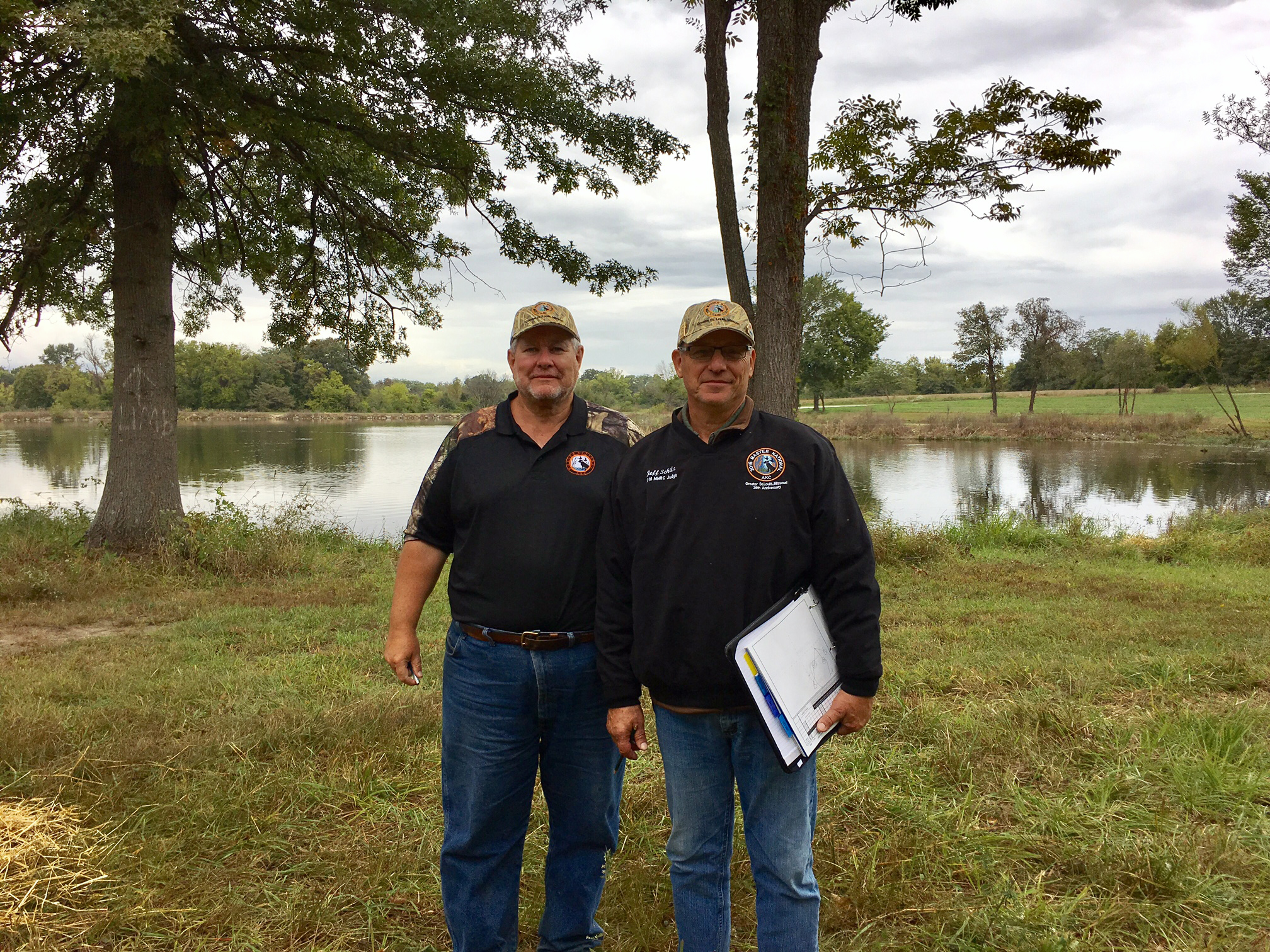
Judges Dan Mills & Jeff Schilz begin morning instructions
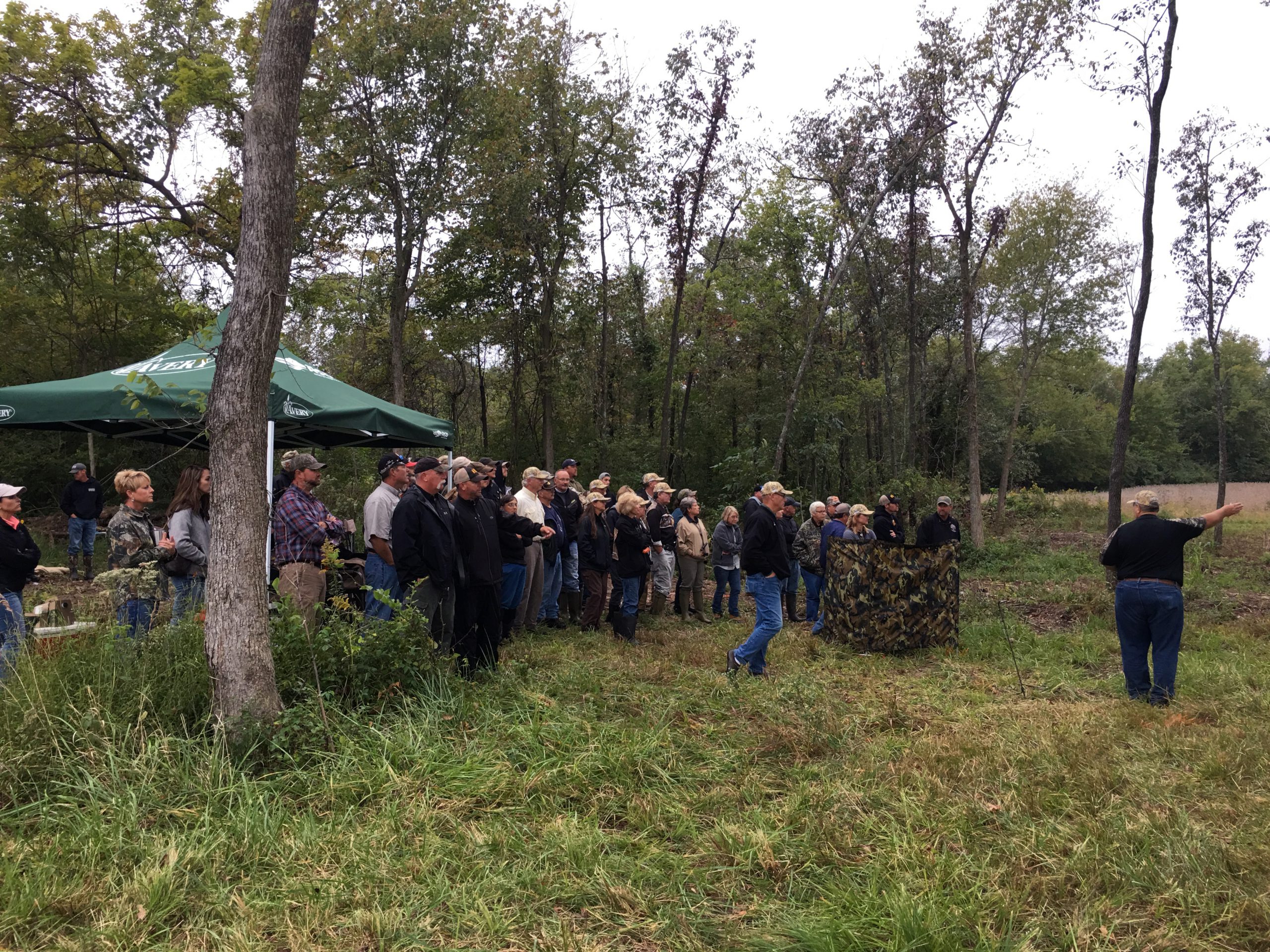
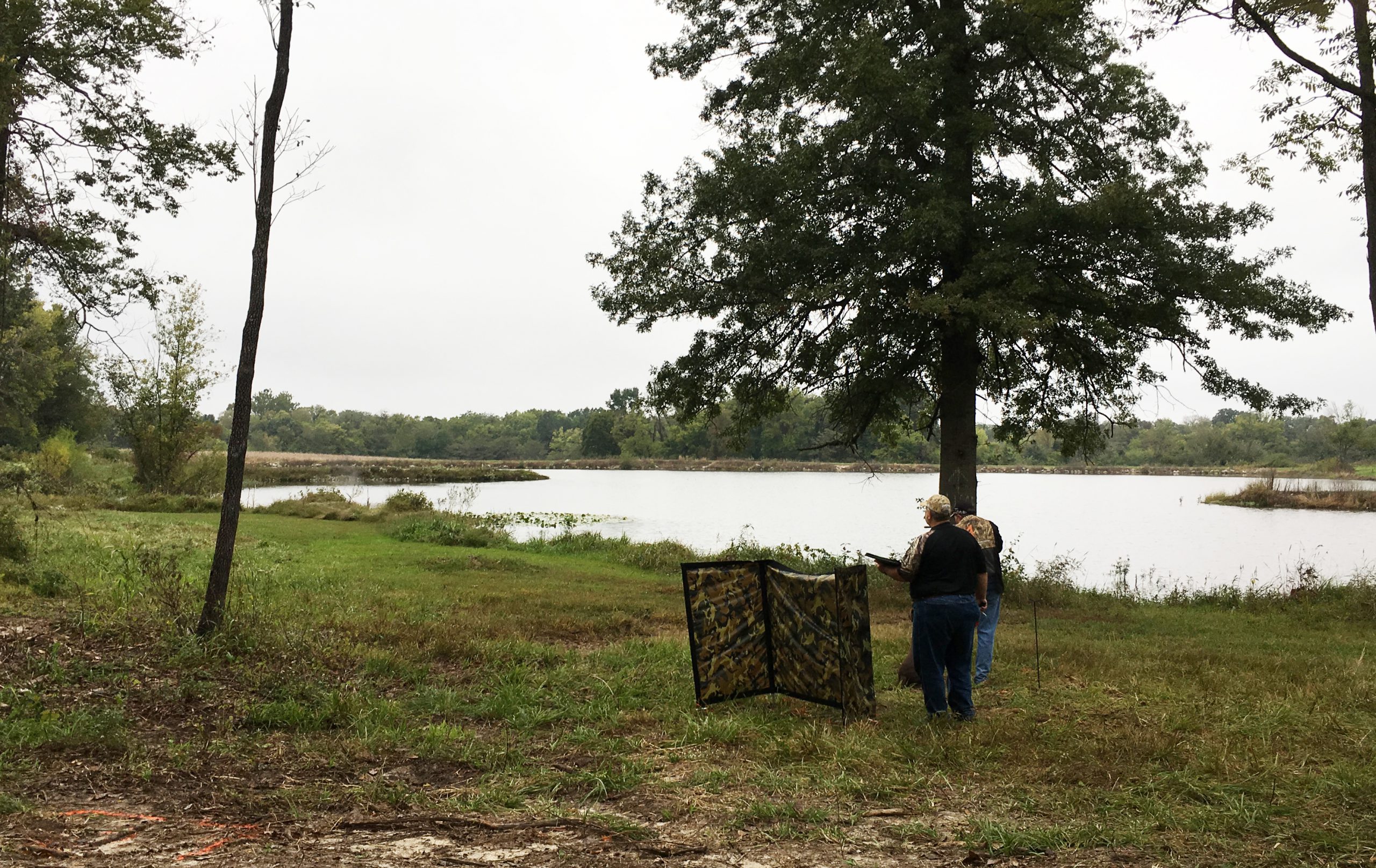
Flight A started the 2016 Master National under cloudy skies on Lake 21 with a Land Water walk-up triple.
The test begins with a walk-up. The walk-up bird is presented at 35 yards and lands 58 yards away on the edge of the lake bank. Bird #2 is a duck flyer that lands out in the water at 57 yards. This bird is “sluiced” for all dogs. Bird # 3 is to the left and lands 48 yards away.
Thee have been some handles on each of the stations but in general dogs are doing well on this series. We have had several breaks on either the walk-up or the flyer.
Flight B Melissa Robinson-Shanks MNRC Reporter
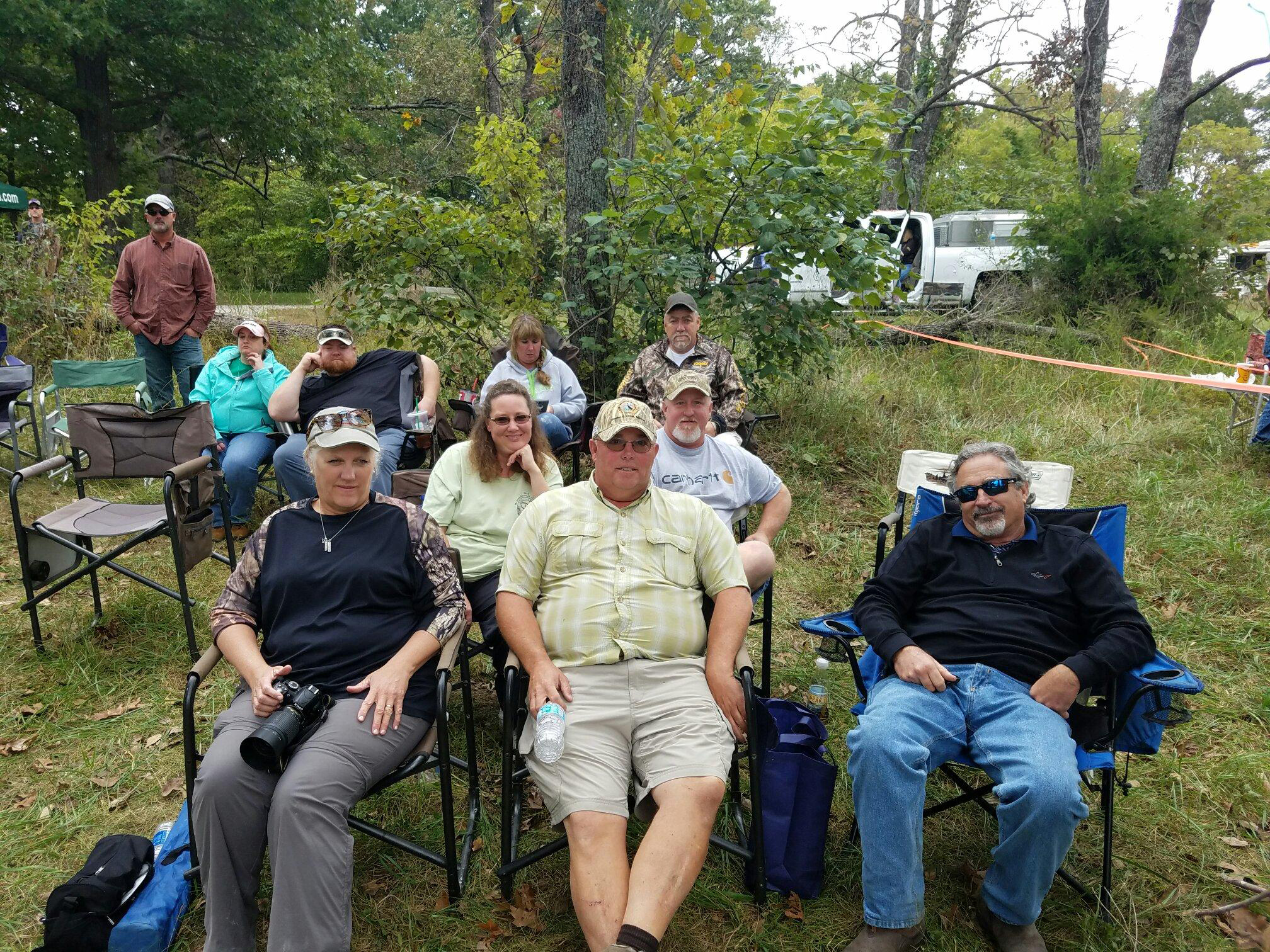
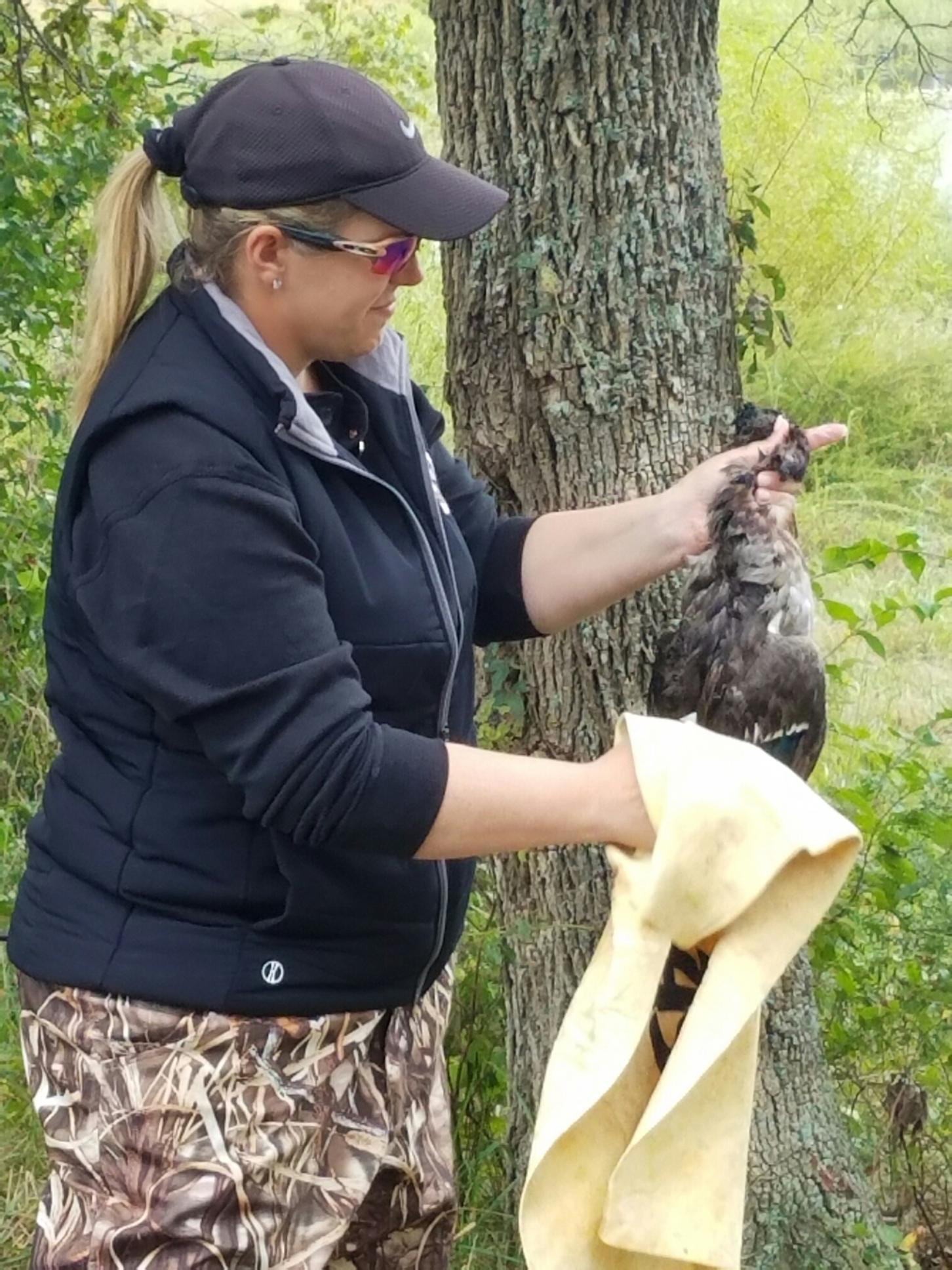
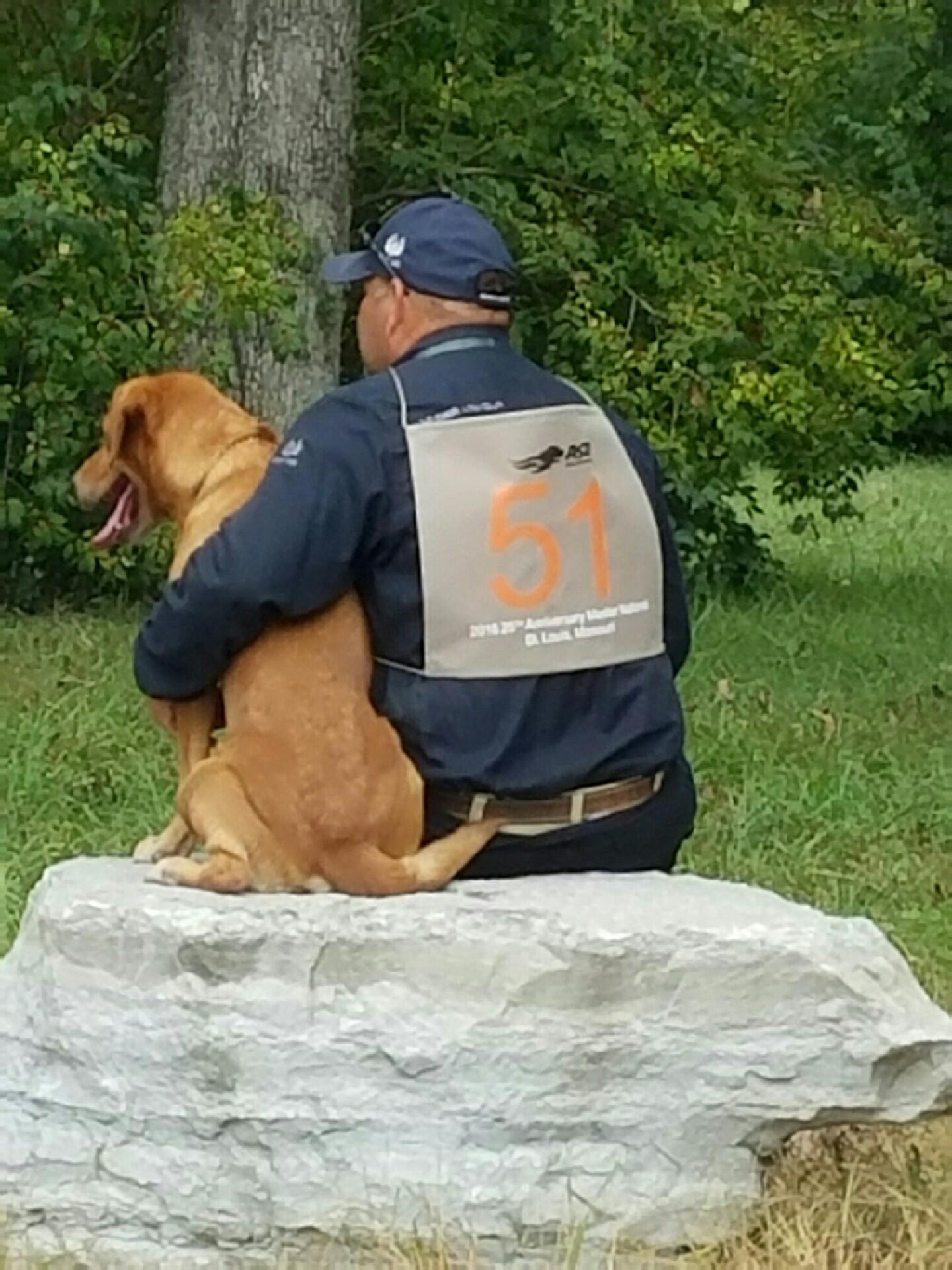
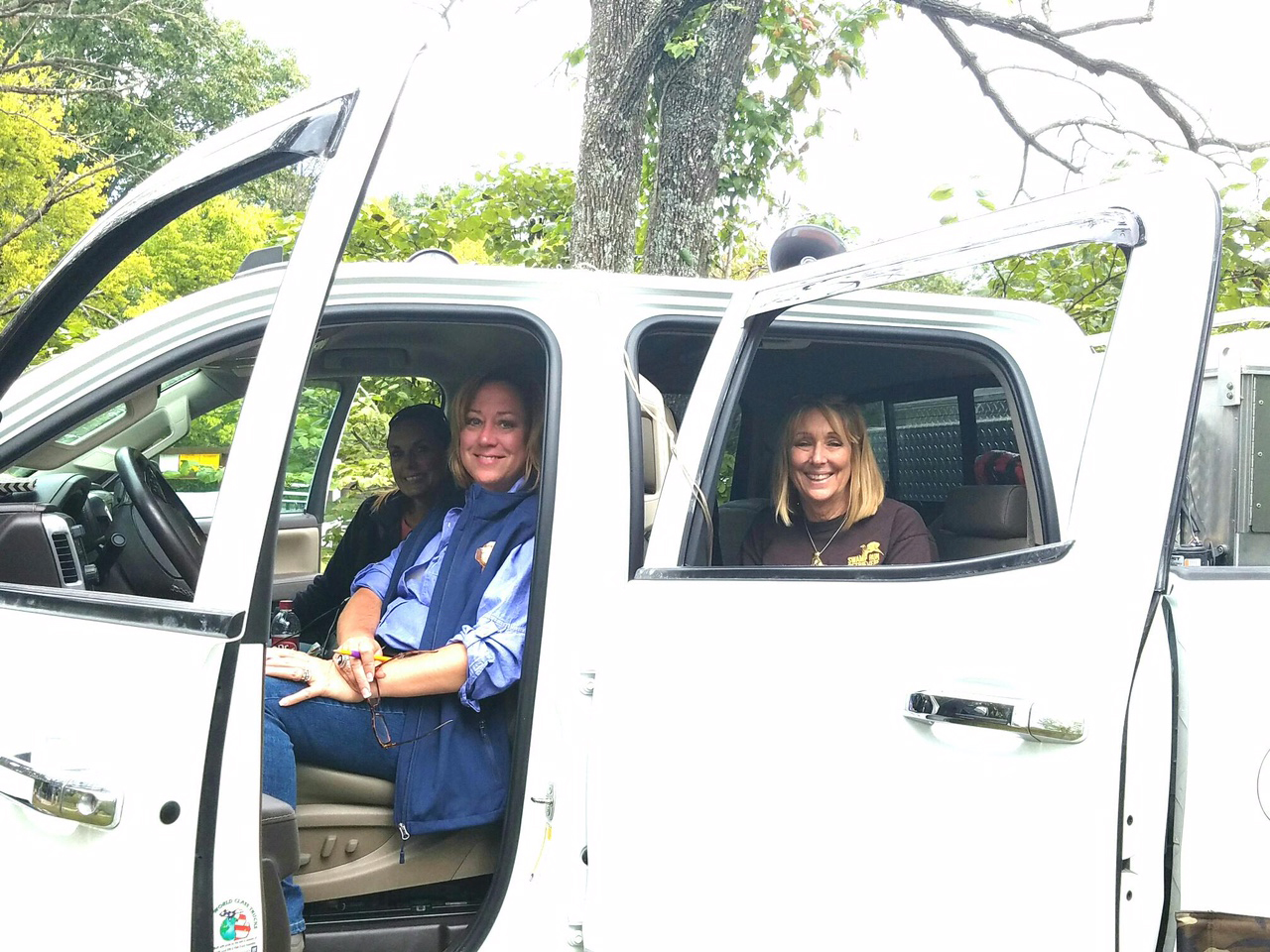
Our first series had a quick change in plans at the start of the test. Everyone chipped in to relocate the test to ensure the safety of dogs. We were up and running the new set up 45 minutes later.
The new test is a walk up triple. The walk up bird is 30 yards, thrown in from right to left. The second bird (duck flyer) is a 180 degree swing to the left. The duck flyer being thrown a left to 90 yards down the shore. The third bird is a 28yd hip pocket bird being thrown left to right.
There have been quite few handles on both the left hand birds.
Flight C Frank Barton MNRC Reporter

Flight C judges Laura Judd and Alan Bruhin drew the Triangle Land test to start the 2016 Master National. As the daylight washed across the field it was obvious that Stake Chair Allen Dillard had set up almost complete. Workers soon arrived and gunners were sent to the all important pheasant flyer station to get ready for the test.
At 8:03 handlers were called to the line by the judges as they explained the mechanics of the test. This is a land Triple with a Double Blind, Diversion Bird and an Honor. Bird number 1 is a flyer coming from behind a tree to the right and landing at 80 yards.
Bird #2 is directly in front of the dog and lands 93 yards away. Bird #3 Is thrown from a group of trees to the left and lands 85 yards away. On the way back from the last retrieve a diversion bird is thrown from the left. The handlers are instructed to pick up the Left blind first at 108 yards.
After retrieving this blind the handler has the choice of retrieving the diversion bird and running the right blind at 106 or running the blind and retrieving the diversion bird last. The test concludes with an honor for the next dog. All birds used in this test are pheasants.
The first test arrived at 8:11 and completed the test in 7 minutes without a handle. Test dog number 2 stepped out of the holding blind at 8:19 and completed the test in 5 minutes without a handle. The judges then invited the first 15 handlers to view the line.
Dog 142 came to the line at 8:44 and C-flight was off and running. While the marks on the test appeared to be straight forward it soon became obvious that the left hand go bird was going to be problematic for lots of dogs. The bird was thrown at a slight angle and landed in a depression in the field that made marking it difficult.
The downward slope of the field in this area contributed to dogs overrunning the fall and they inevitably found themselves in the area for the left hand blind that caused the dogs to hunt outside the fall area of the mark. Many dogs handled on this bird which created lots of anxiety with handlers.
Nobody wants to handle on the go bird in the first series. The flyer was generally the next bird chosen to retrieve. The gunners throughout the day were very consistent with this bird and dropped it on the hillside at approximately 80 yards. The middle bird was generally picked up last, there were a few handles on this bird, but not as many as on the go bird. A double handle on this test did not get the handler an invitation to run the blinds. There were several double handles and they became more numerous later in the day.
This 6 retrieve test averaged 8.1 minutes to complete. Dog number 72 left the line at 6:15pm and the judges decided to resume testing until Sunday morning at 7:45. It is estimated that C-flight will finish the test on Sunday, but not in time to start a second series the same day.
Flight D Dorothy Ruehman MNRC Reporter
Flight D began the competition with an exciting and challenging First Series duck hunt at Lake 26.
The delightful crisp temperature is welcoming, and electricity fills the air with anticipation of the start of Master National’s 25th event. Handlers and owners hushed all utterance this Saturday morning in anticipation of the test dogs’ performances. Only dogs, ready to run, sounded off with eagerness from the trucks.
Dogs in contention will be presented with a walk-up triple consisting of two water marks and a land mark. All three marks will be presented from hidden gun stations. The overcast sky and light Northwest morning wind will require exceptional marking for two key birds from every retriever. The series has been nicknamed “DB.” You can probably figure out the meaning of this nickname without too much trouble.
Flight E Missy Lemoi MNRC Reporter

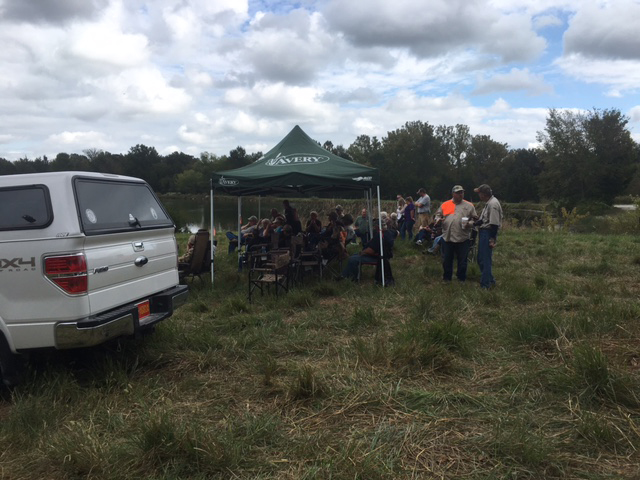
Flight E’s first series is a walk up land/water triple with an out of order flyer on Lake 5. The first bird is the middle mark thrown from left to right from behind tall cattails to a small island. Dogs and handlers then turn to the left for a long flyer shot left to right in a small meadow with decoys. The go bird is a long swing to the right and thrown right to left landing tight to the shoreline. The lines to the middle bird and the flyer are through water.
The cloudy skies, cool temperatures, and light wind do not seem to be hampering any of the dogs. Birds are clearly visible and fall areas are well defined with good separation between the marks. The test has been averaging about 4 minutes per dog. The dogs have been doing well with only a few needing to be handled on the flyer. One or two of the dogs missed the go bird on the first pass, but all have worked it out on their own and picked up the bird cleanly.
The test will resume Sunday morning starting with dog #102.
Flight F Alice Woodward MNRC Reporter

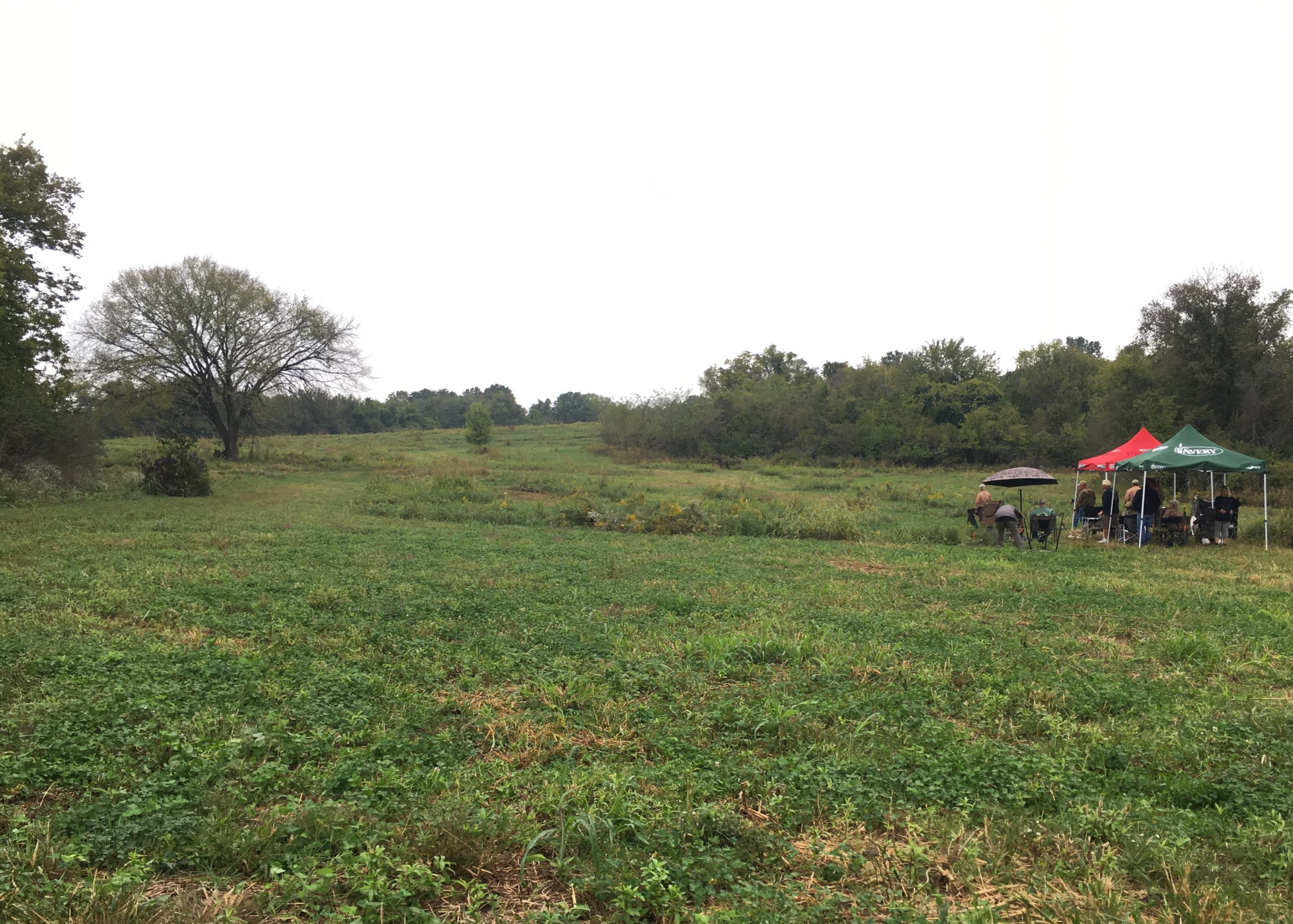
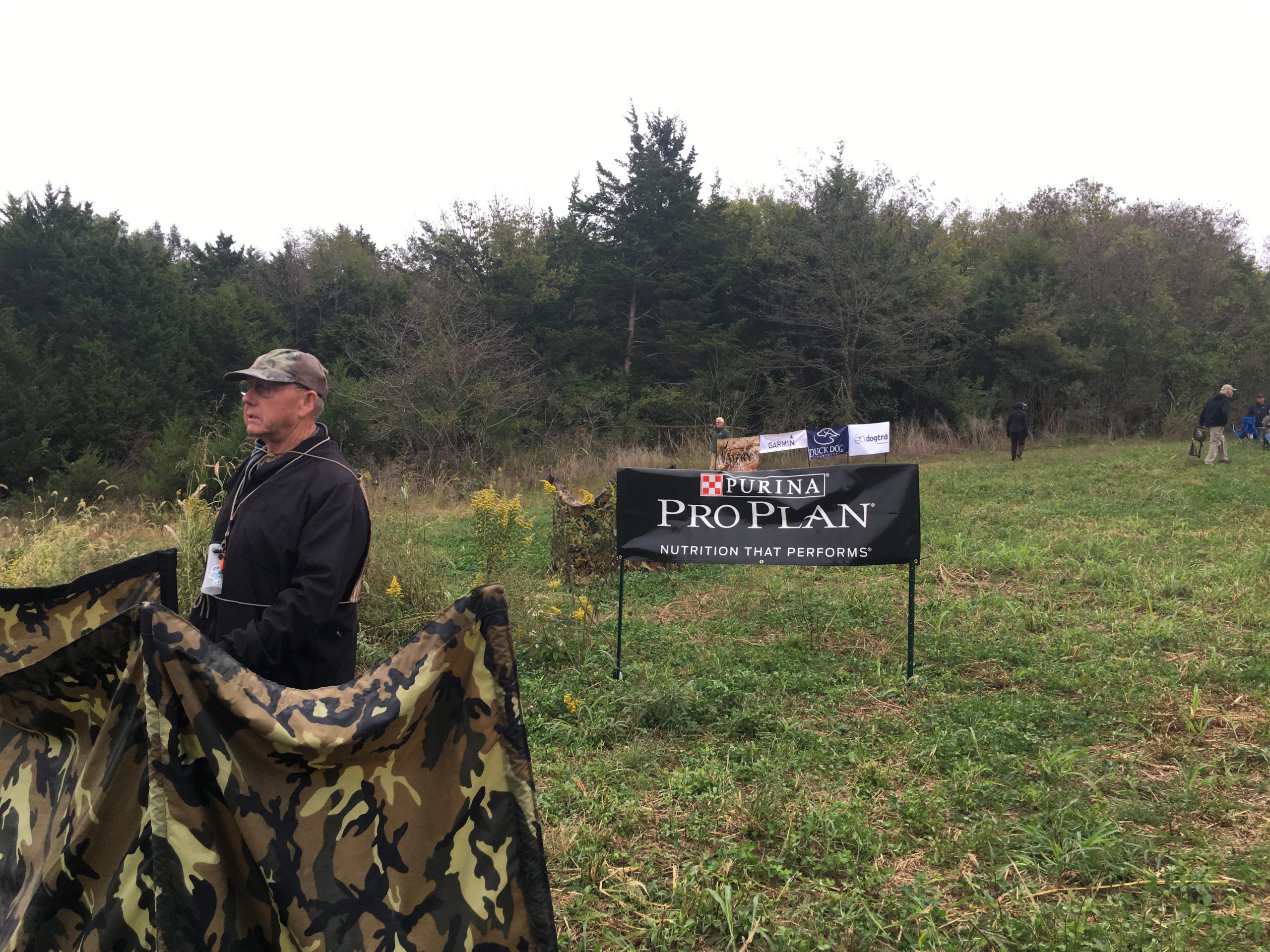
Test description has already been posted. There was no specific “hunting scenario” given but Judge Chris Bodine gave handlers a firm reminder about gun safety when using the handler’s gun.
Test dogs:
The first test dog, Boogie, handled by Jaime Forqueran, went to the line at 8:29 a.m. He encountered crosswind scent coming off the flier station while heading for the right-hand memory bird which confused his hunt for a time but he persevered and recovered the bird without a handle. When sent for the flier it appeared that a patch of cover up front pushed the dog’s initial line to the left. He then hunted back towards the right to end up behind the flier station and from there towards the previously retrieved memory bird. He was then handled to the flier. On the right hand blind, Boogie “showed the handlers the hazards of the test” by ducking out of sight behind a point of trees with several whistles needed to recover.
The second test dog, “Shay,” was handled by Sue Liemohn. Shay had an extremely long flier that showed the gallery why you don’t want one of these! After the right-hand memory bird was efficiently recovered, a handle was needed to get the flier when Shay’s hunt began to work back towards the previously retrieved memory bird. A lot of perseverance was needed for this handle due to many areas for a dog to go out of sight behind cover patches and rolling terrain with a flier as long as this one. Shay then showed the handlers another hazard of the test on the right-hand blind, when he retrieved the diversion bird “ahead of schedule.”
Running Dogs’ Work: The first running dog went to the line shortly before 9 a.m. The time required for most dogs to retrieve the six birds of this test has been running between 6.5 to 7.5 minutes a dog. A few dogs have taken longer if they have longish hunt. Overall, completing the testing of the first 12 running dogs has taken an hour and 40 minutes, including two re-birds during this time.
All birds are rooster pheasants thrown by wingers and are preceded by the blowing of pheasant calls (including the flier). Visibility for the marks has been good and the dogs have seemed to have had no problems seeing the birds go down, nor with seeing their handlers (most of whom are wearing black). With an overcast sky and wet ground conditions the birds have not been easy to scent. Fliers this morning have been varying substantially — ranging from super long to barely flopping out of the winger. The great variability in flier falls has given credence to the judges’ advice given at the handlers’ meeting on Friday to “mark your own fliers!” You may well need to know where it is because your dog might not. The wind this morning has varied quite a bit — between both directions of crosswind to even a wind in the face at times.
Statistics on the first 12 running dogs: 6 single handles, with half the handles being on the right-hand memory bird and half on the flier. There have been 5 jobs with no handles, which work ranged from strong to not so strong. There has one pick up on the right hand blind.
Work on the Marks so far: The “go bird” on the left has given no trouble to any dog, with many dogs pinning it. Handlers have been split on which memory bird they have wanted to send for next, with some opting for the right-hand bird and some for the flier. The “hip pocket” configuration of these two memory birds, coupled with the cover patches throughout the area — some strategically located to turn the dogs — has resulted in the hunts on one of the pair of memory birds bringing a dog perilously close to the wrong fall area — with the resulting need for a handle. In some cases a long flier has resulted in the need to handle on it simply because it has landed so far from the rest of the “action” that the dog could not find it.
Work on the Blinds so far: The left-hand blind has been straightforward for the teams but the right-hand blind has proven to be a difficult challenge for some. The line to this blind is under the arc of the right hand memory bird and runs right next to a grove of trees where a dog can be lost to the right.
Diversion Bird so far: The work has been about split between dogs that have handled on the diversion and those who picked it up as a mark. No dog has had a problem with this bird.
Continue with the Daily Blog : Tuesday
